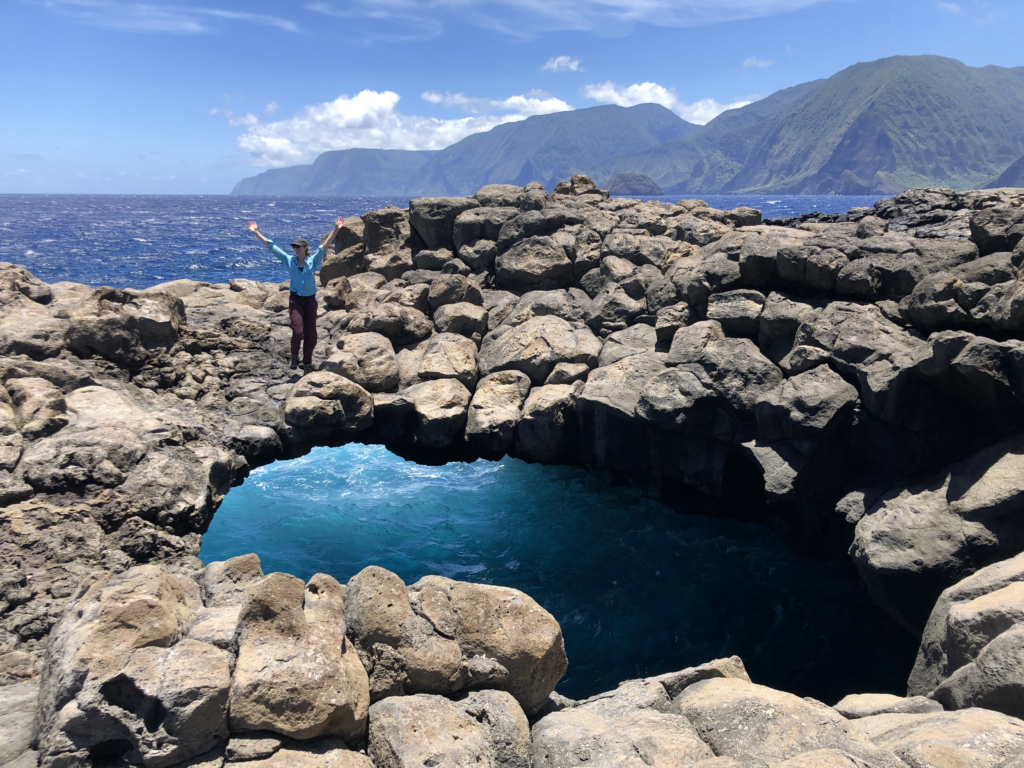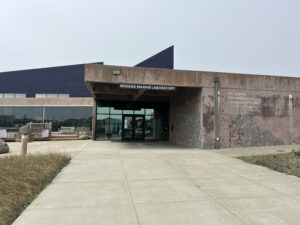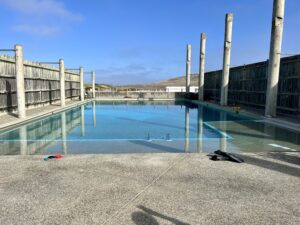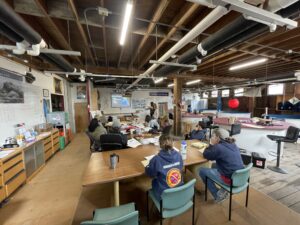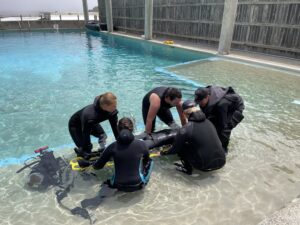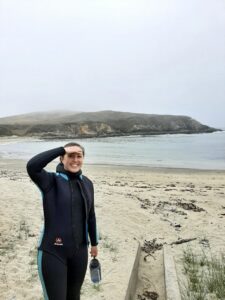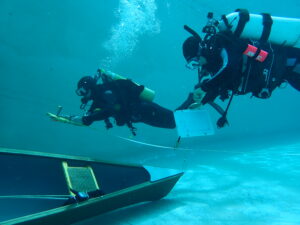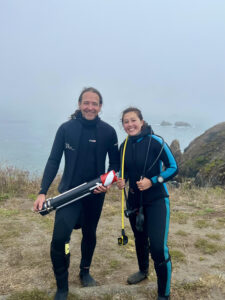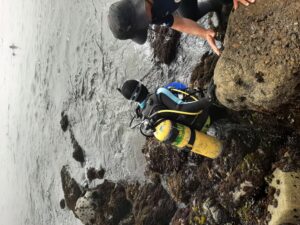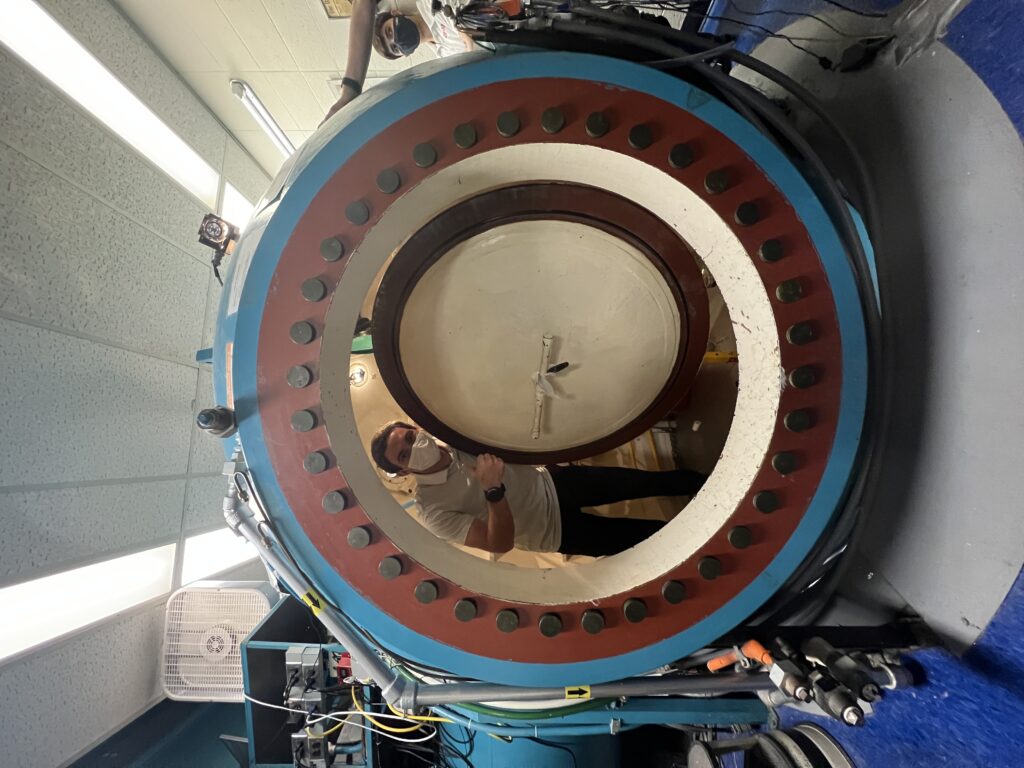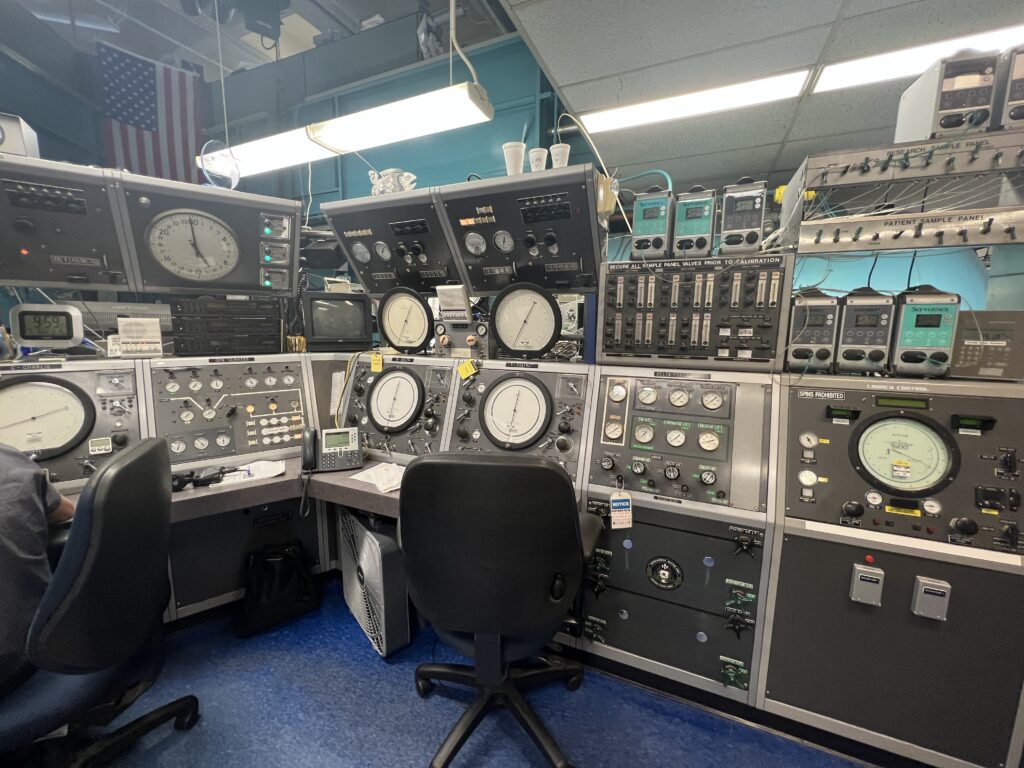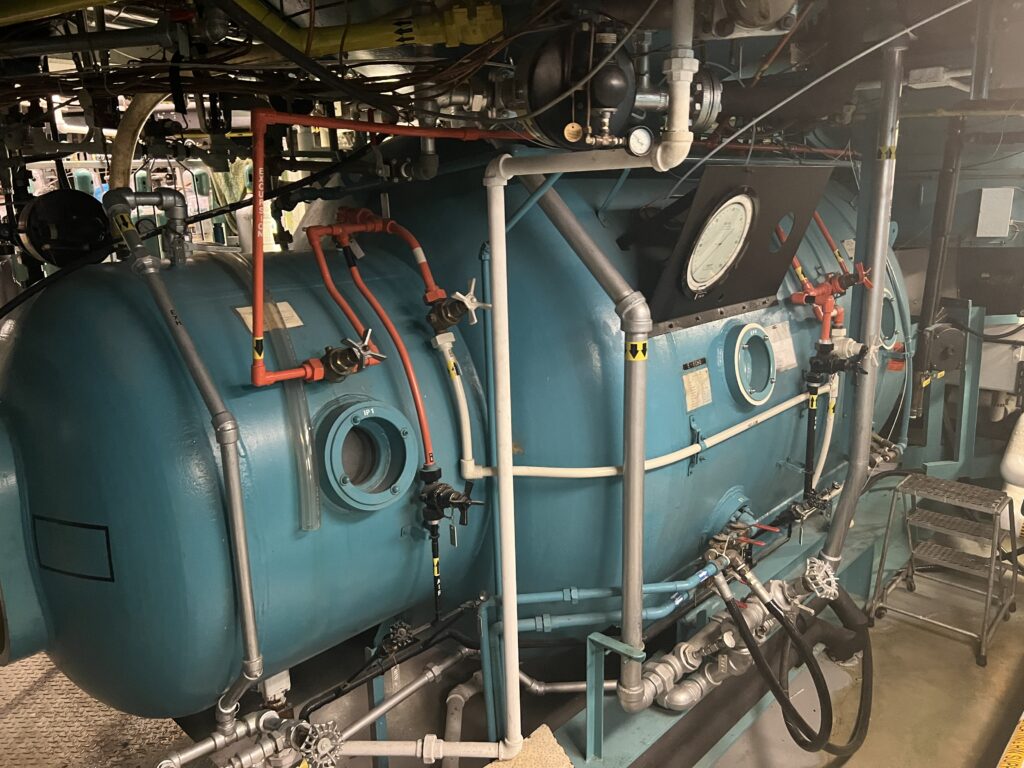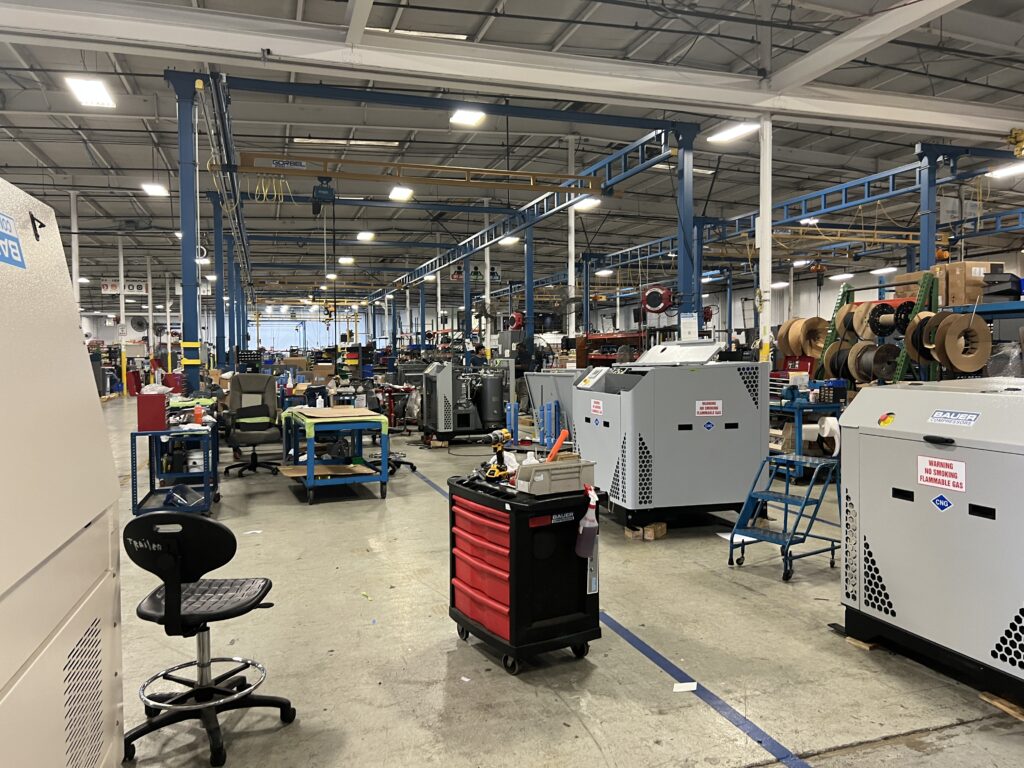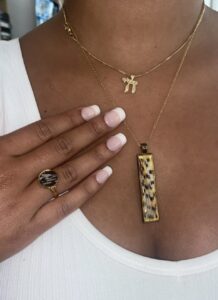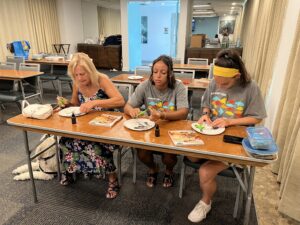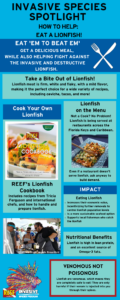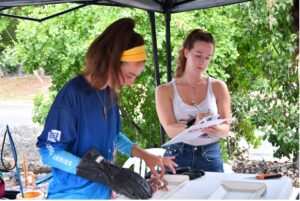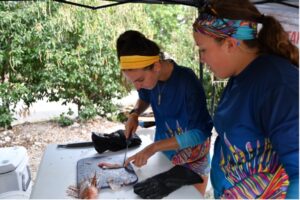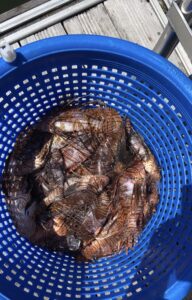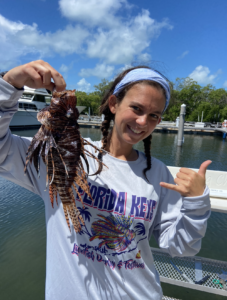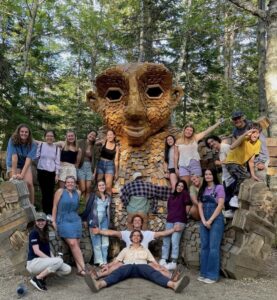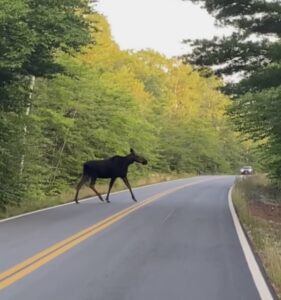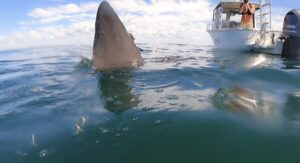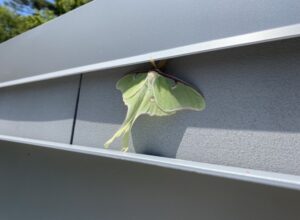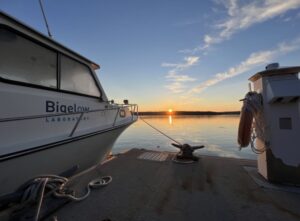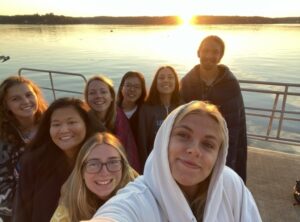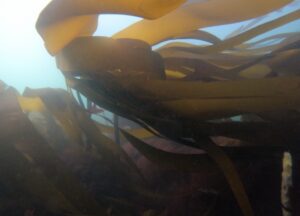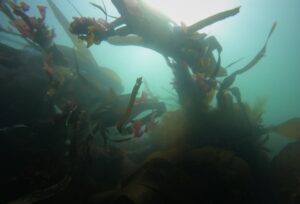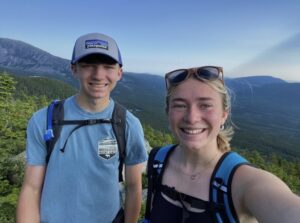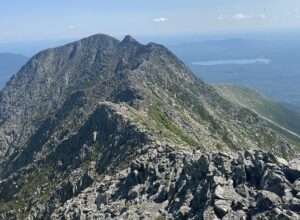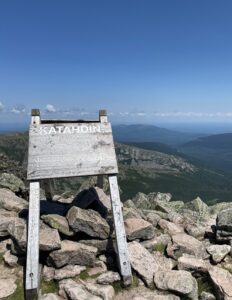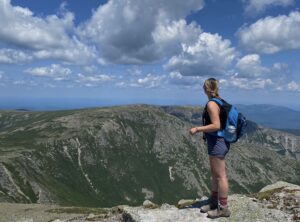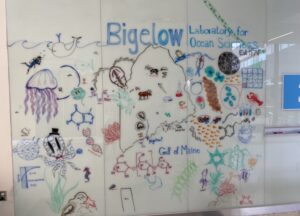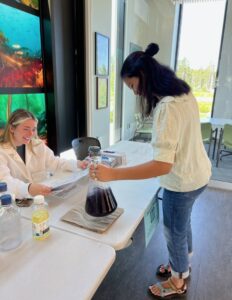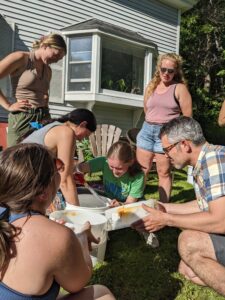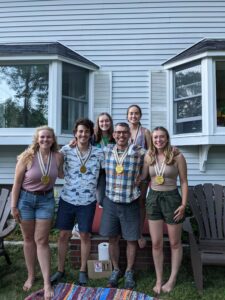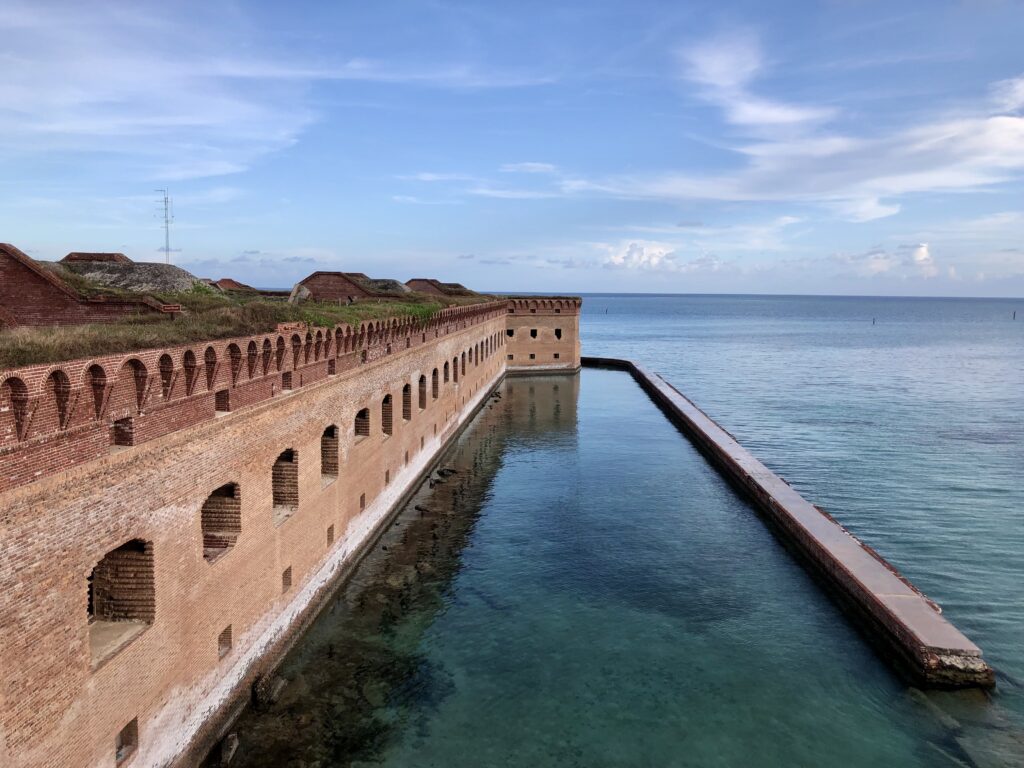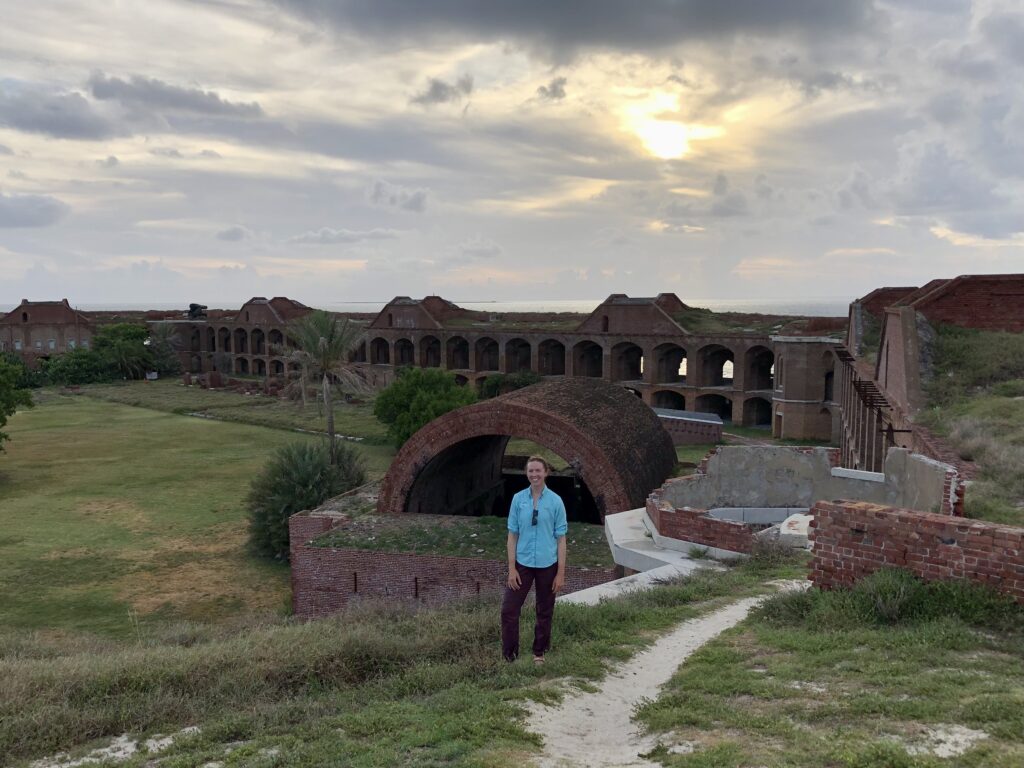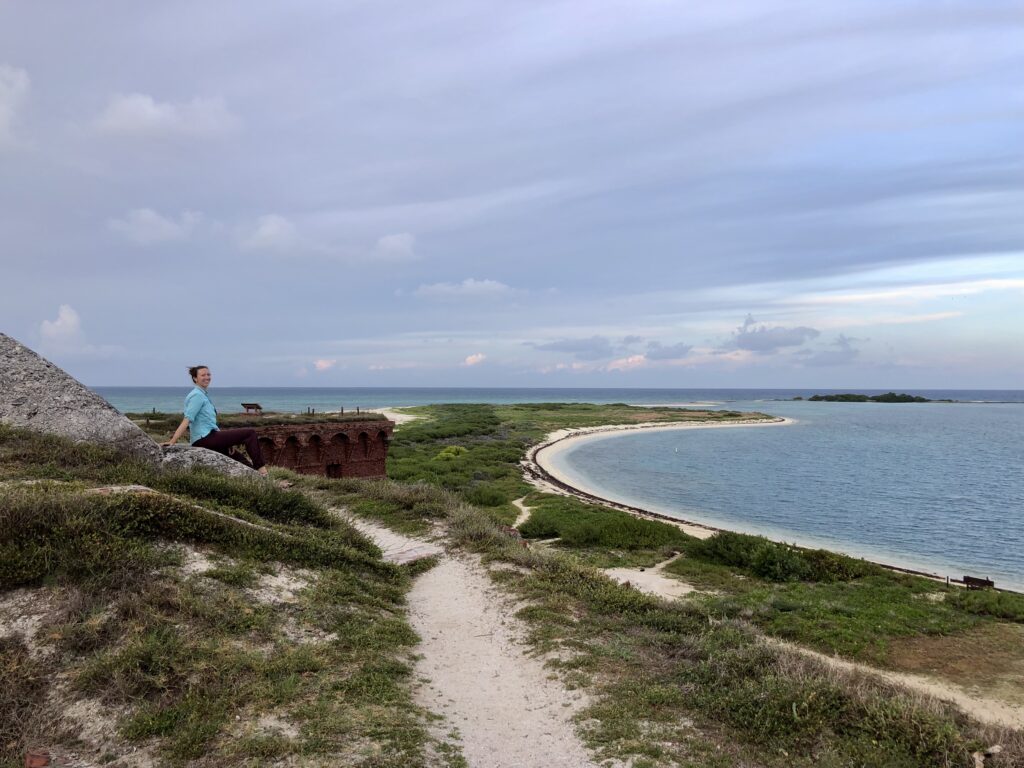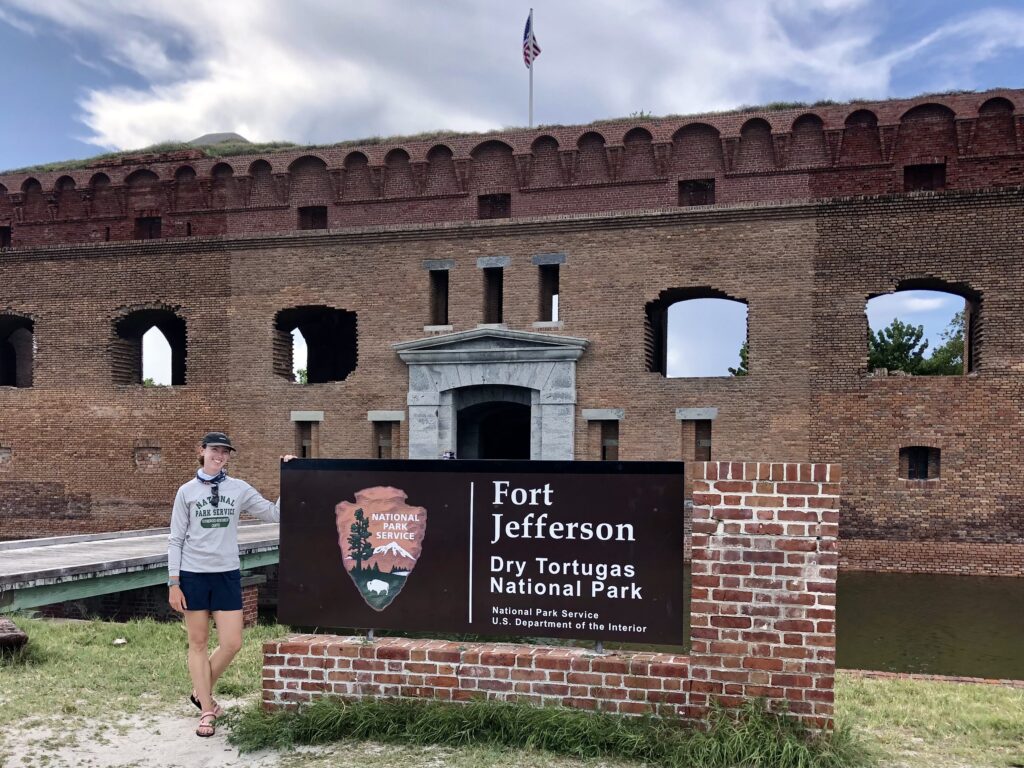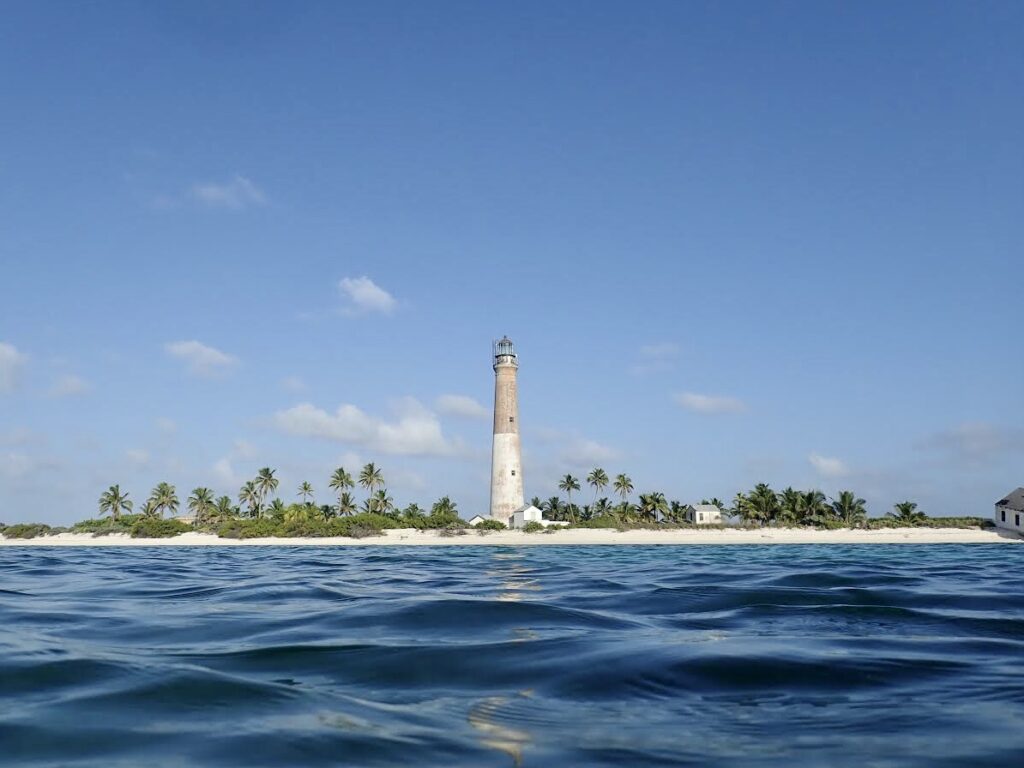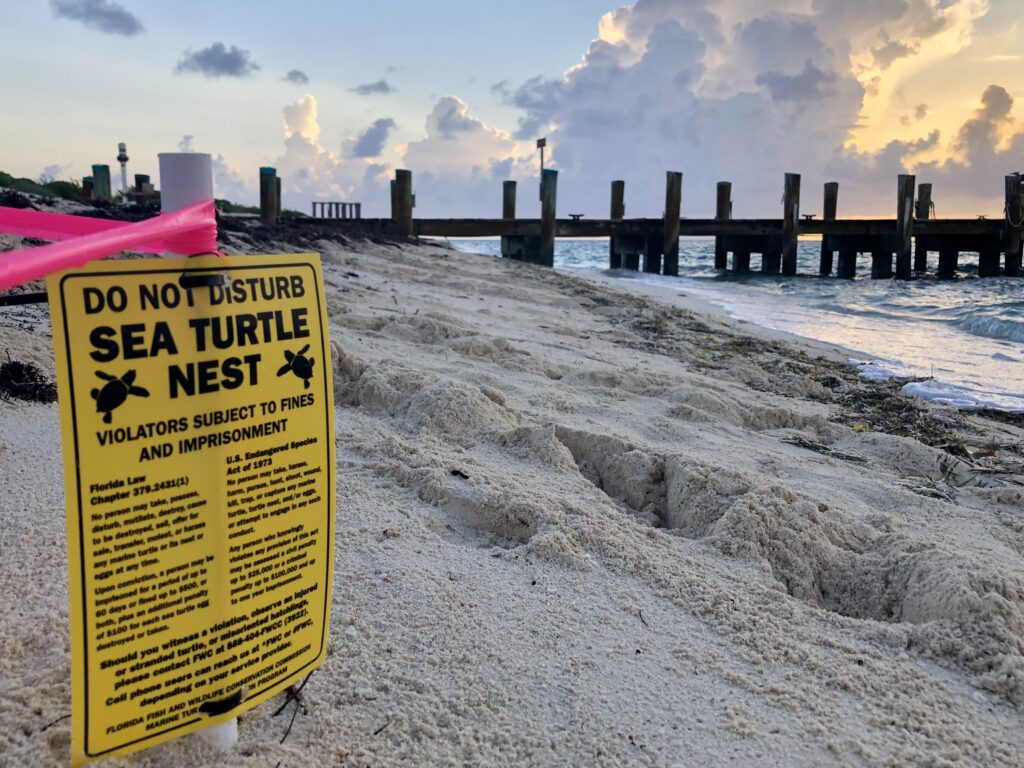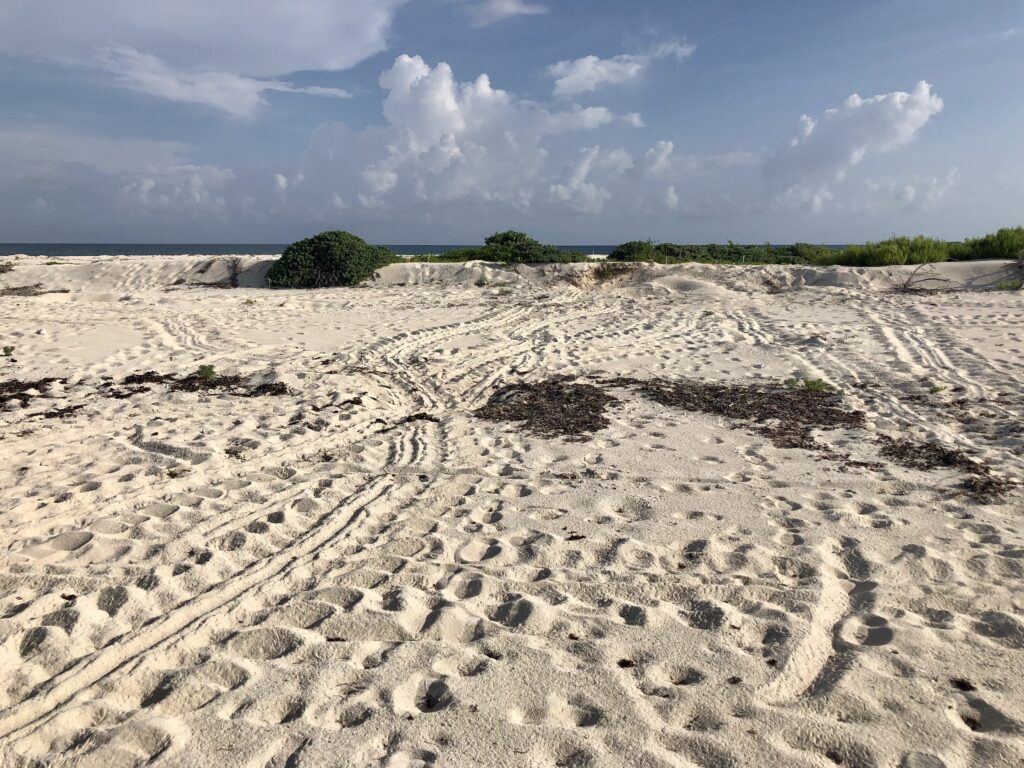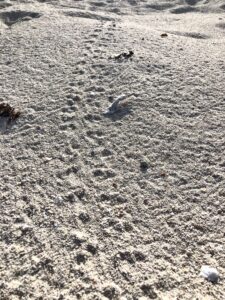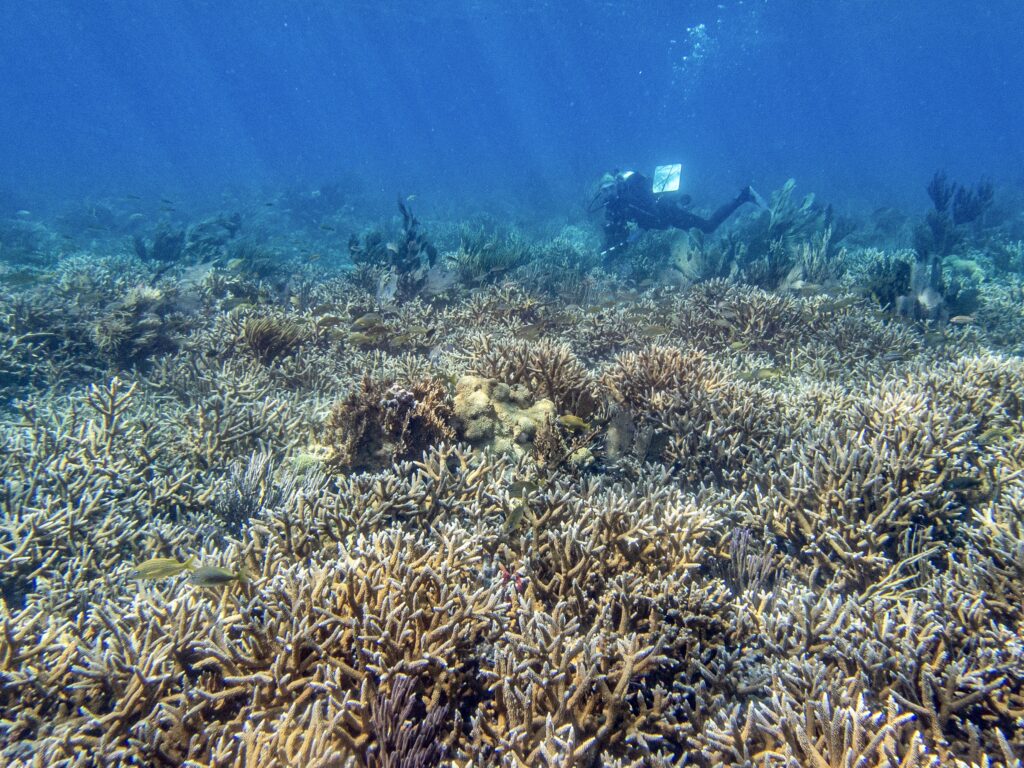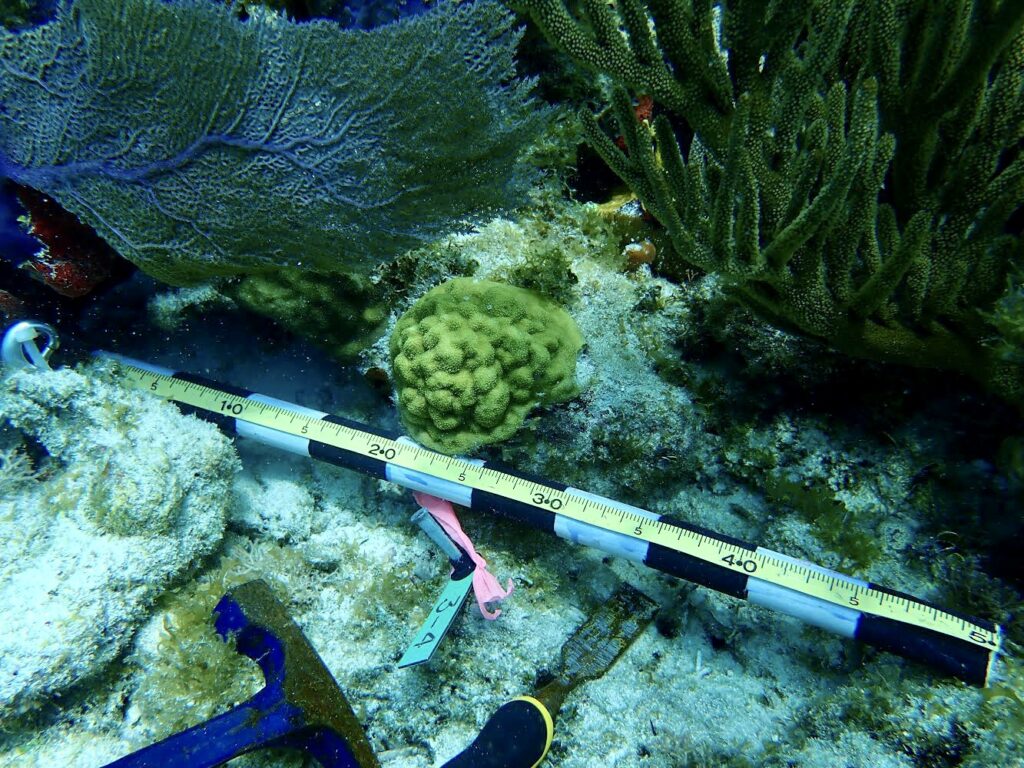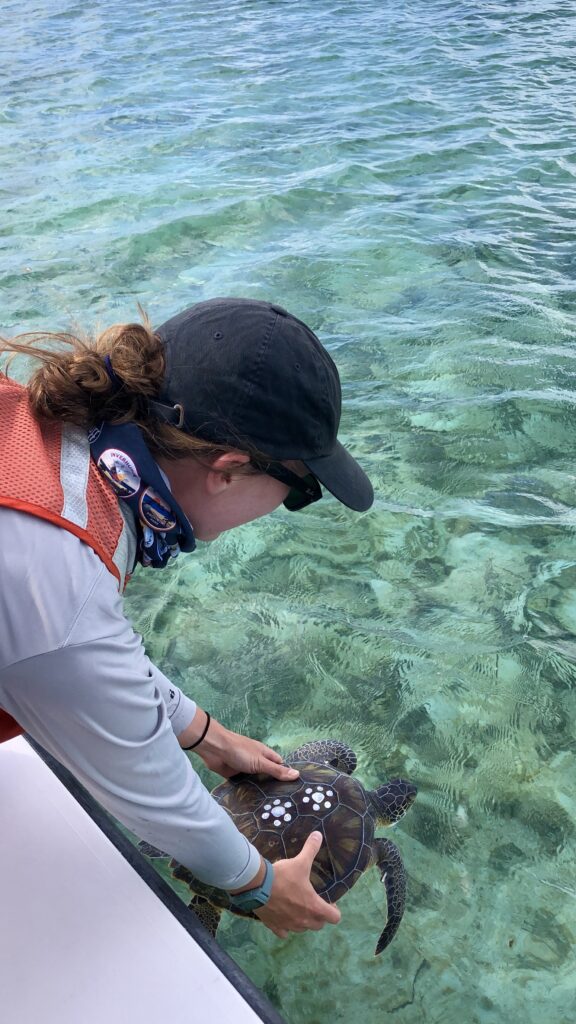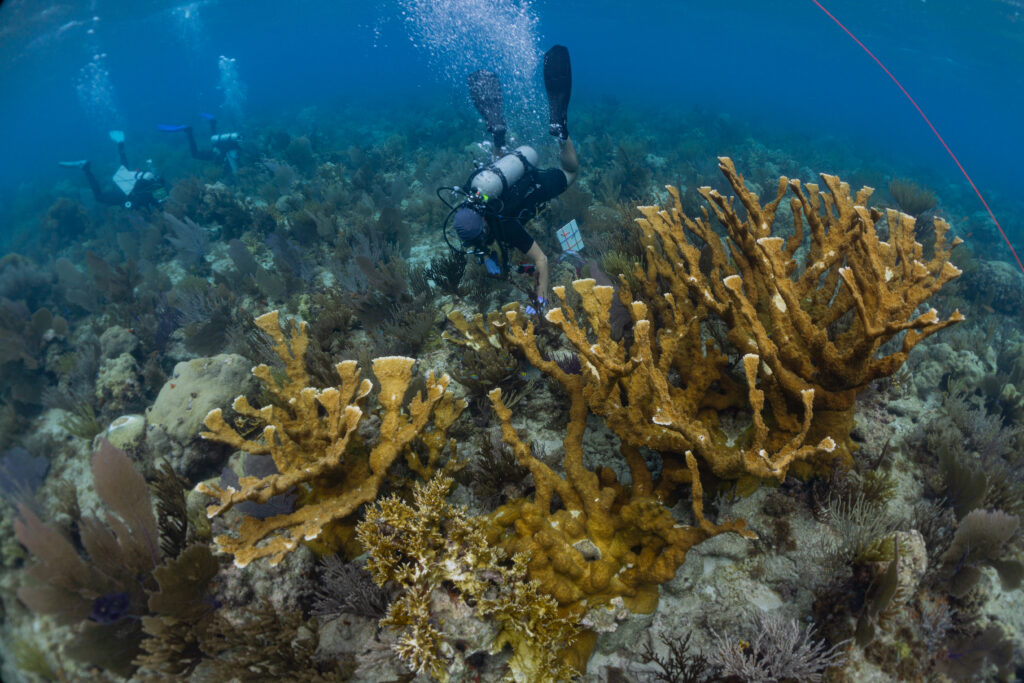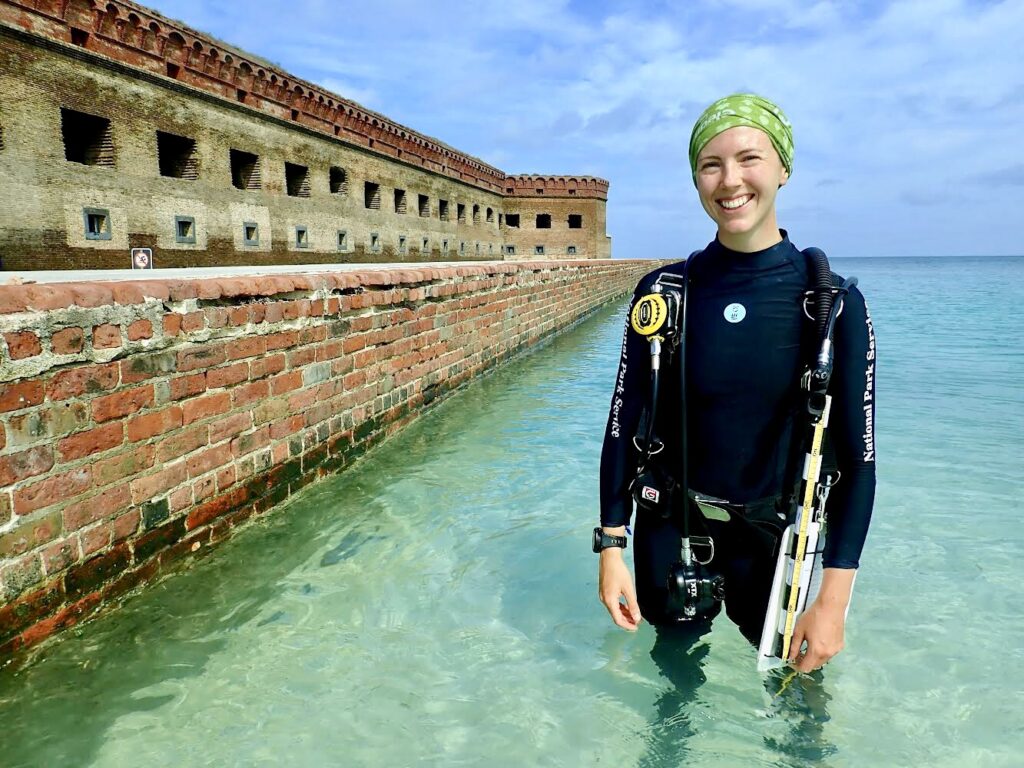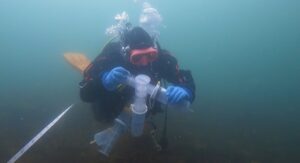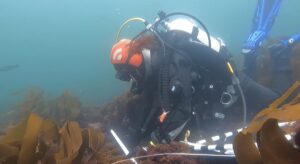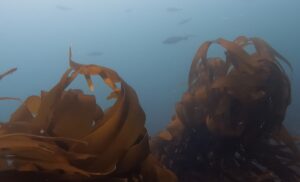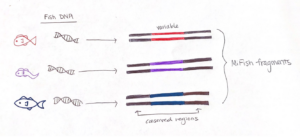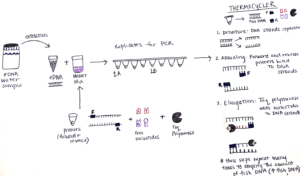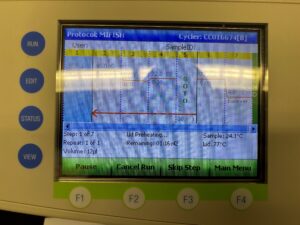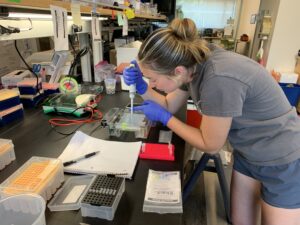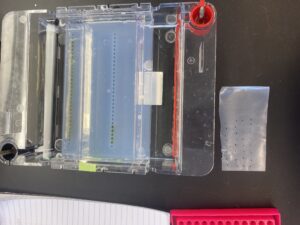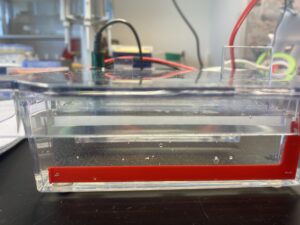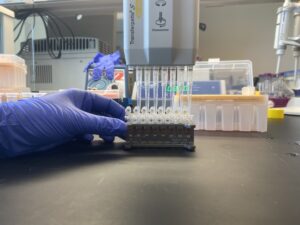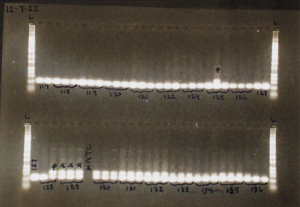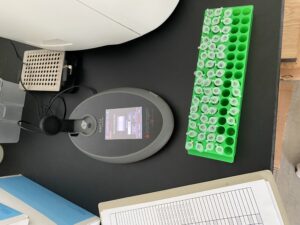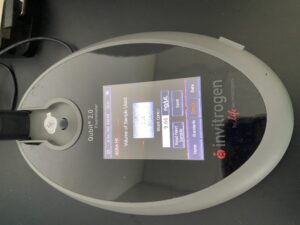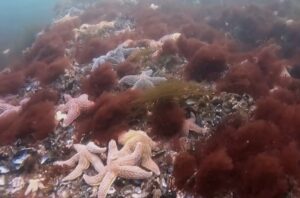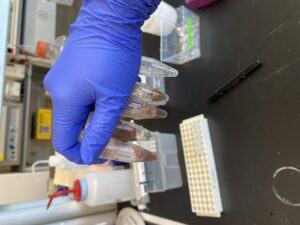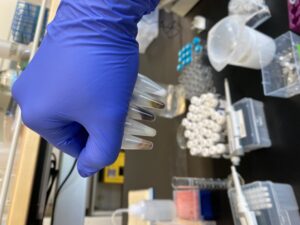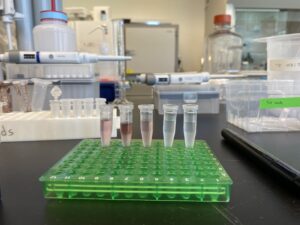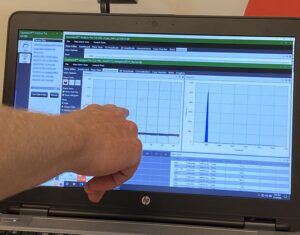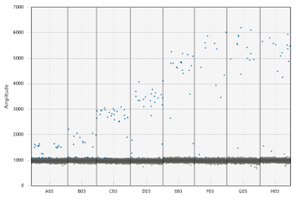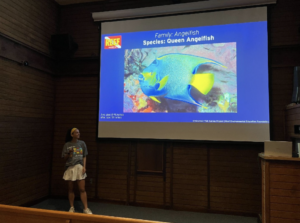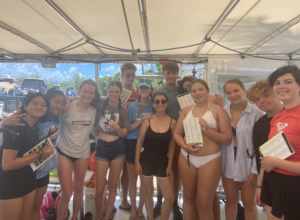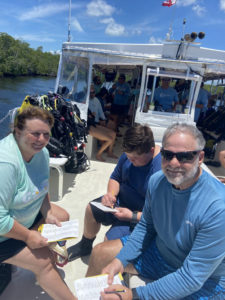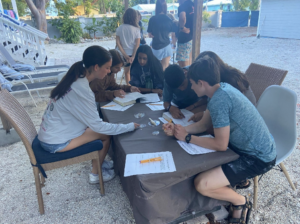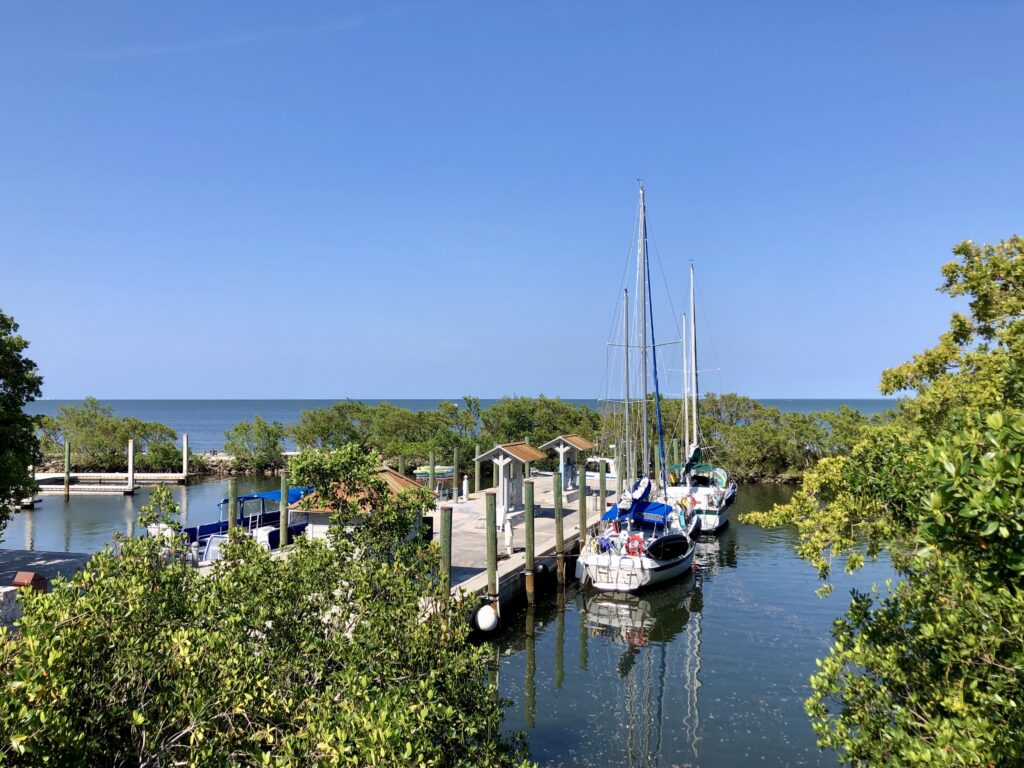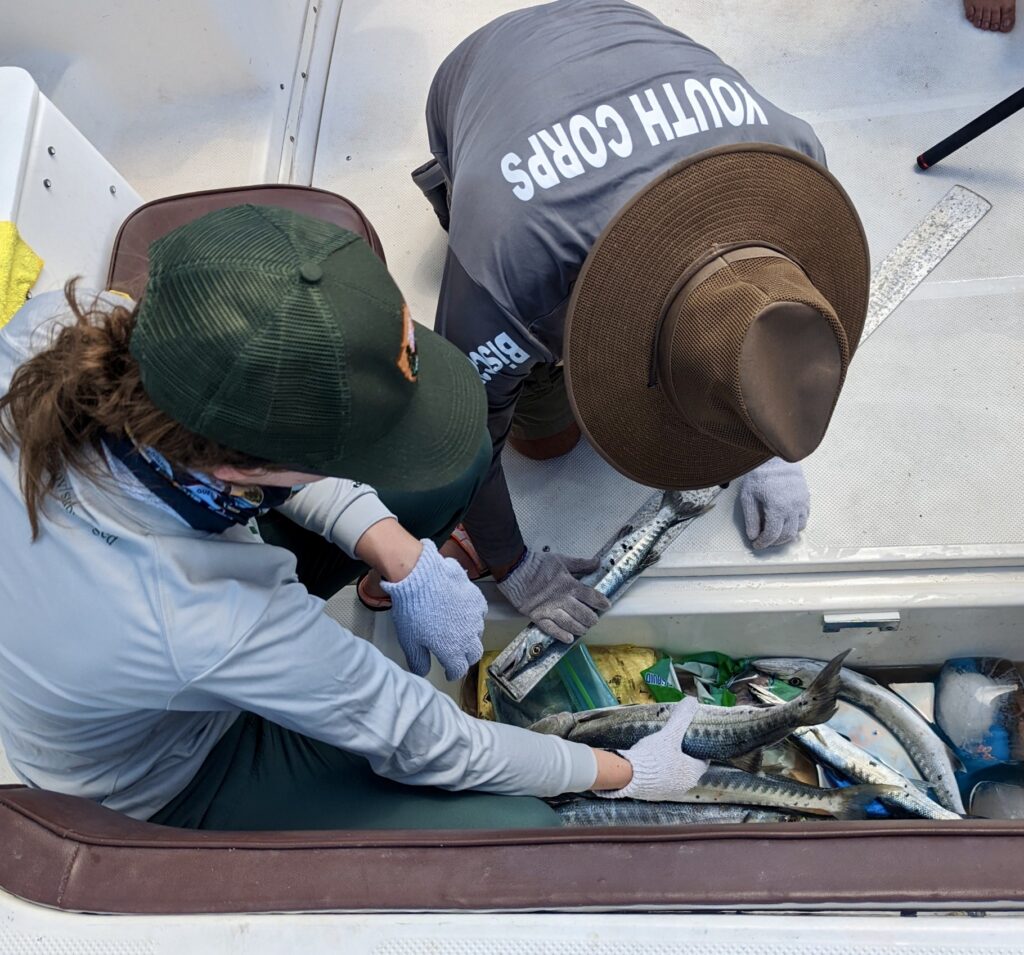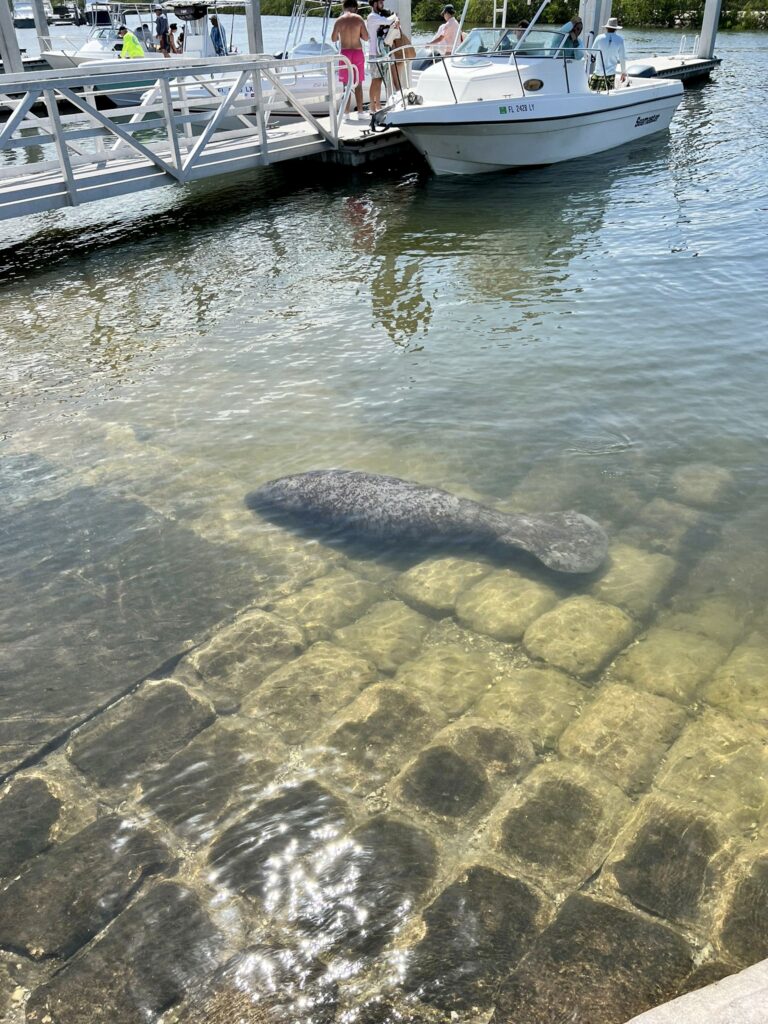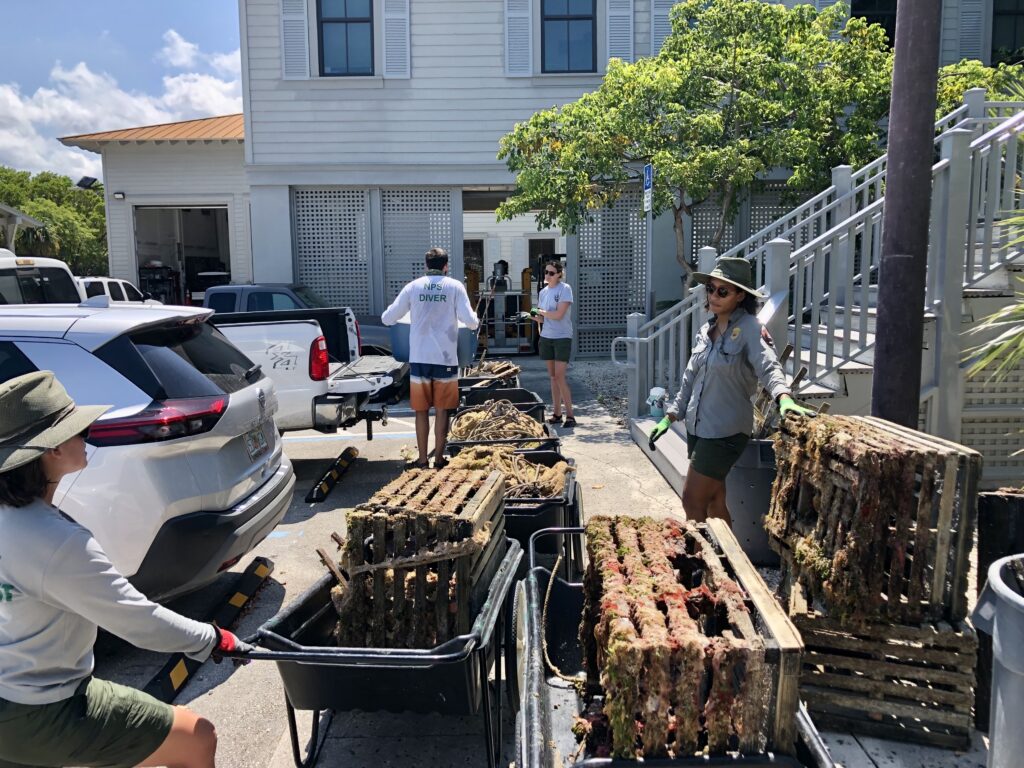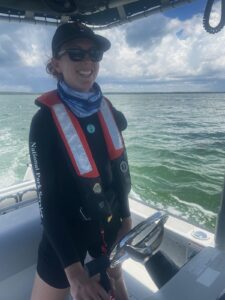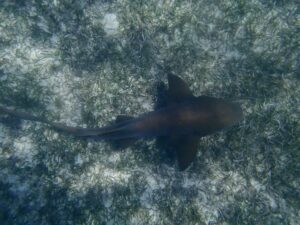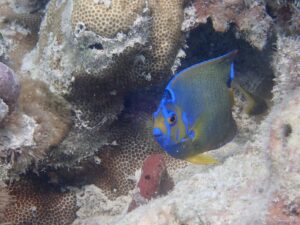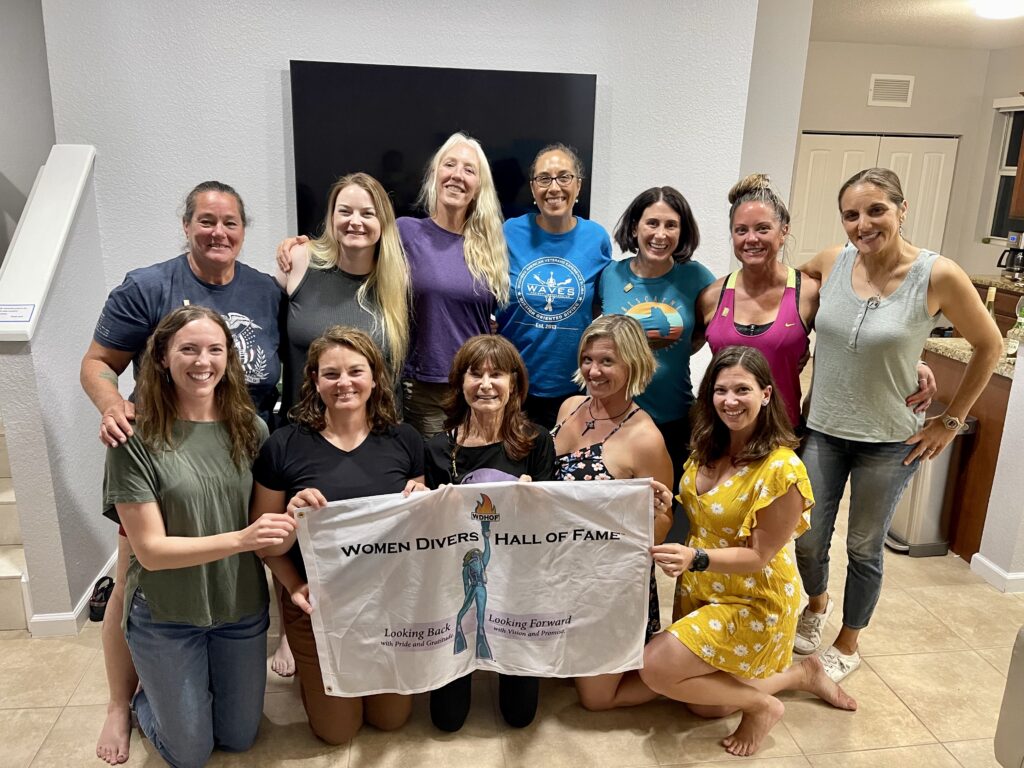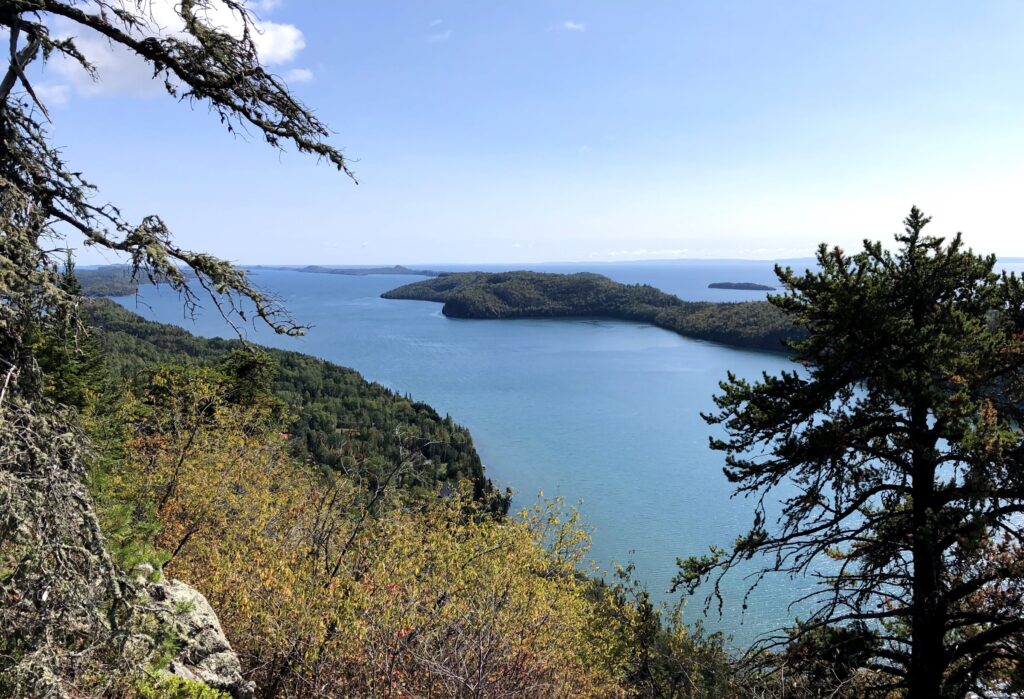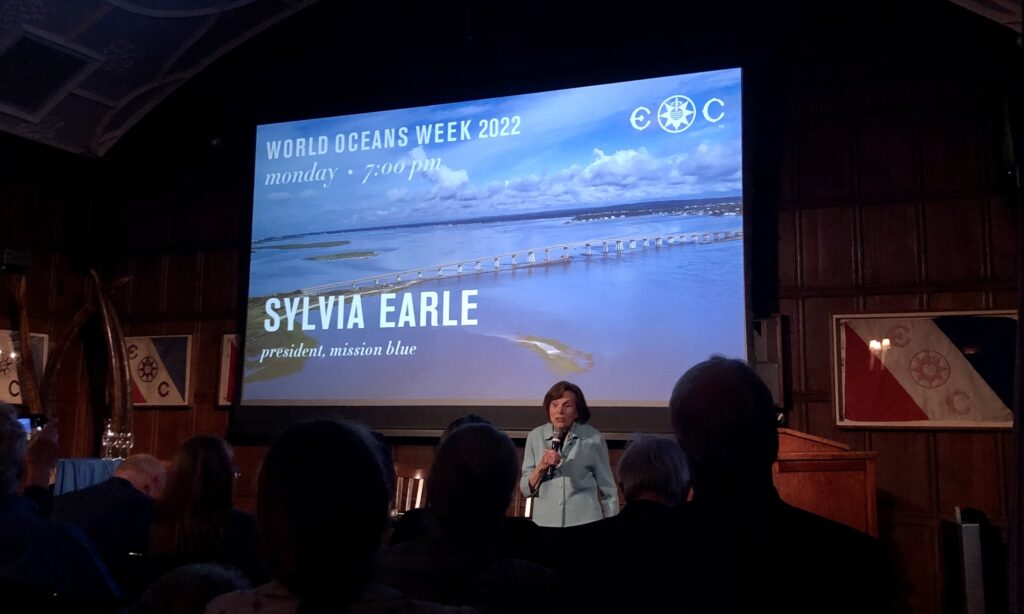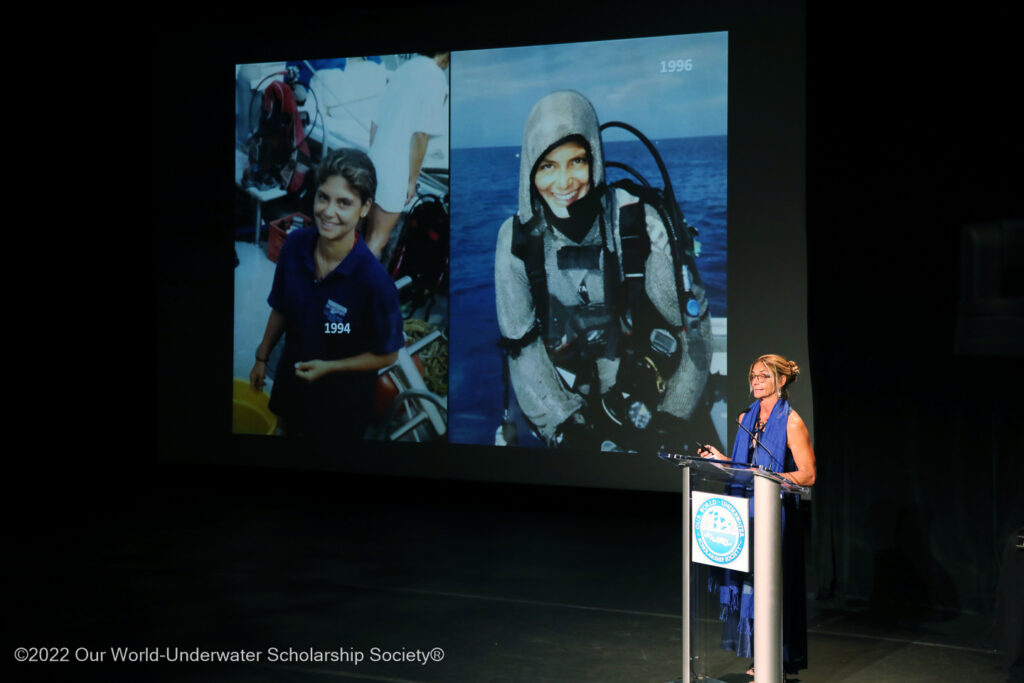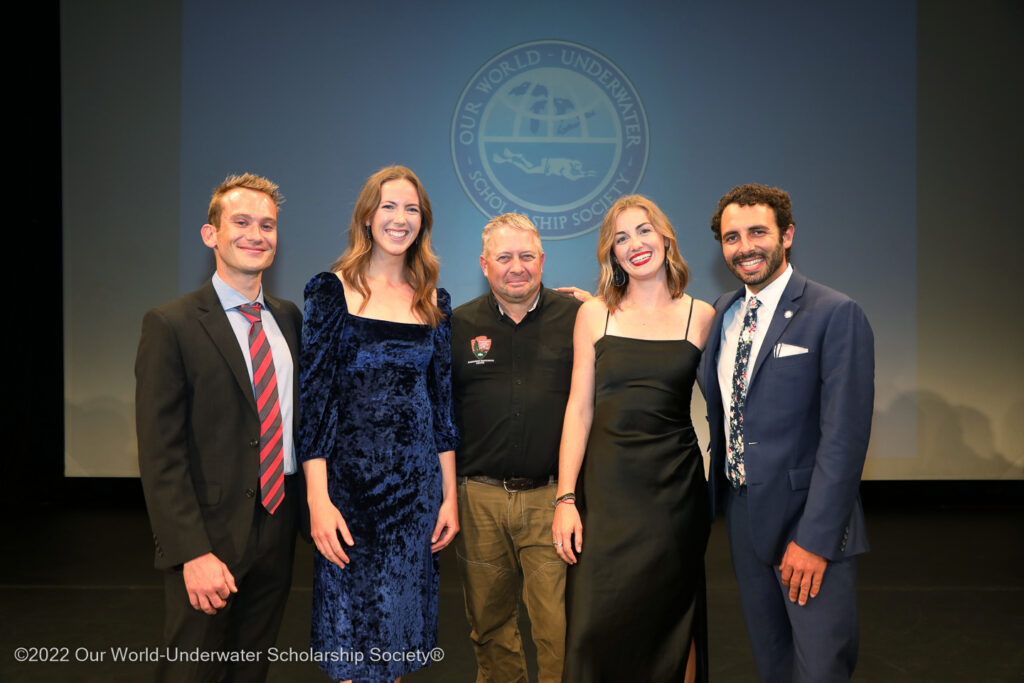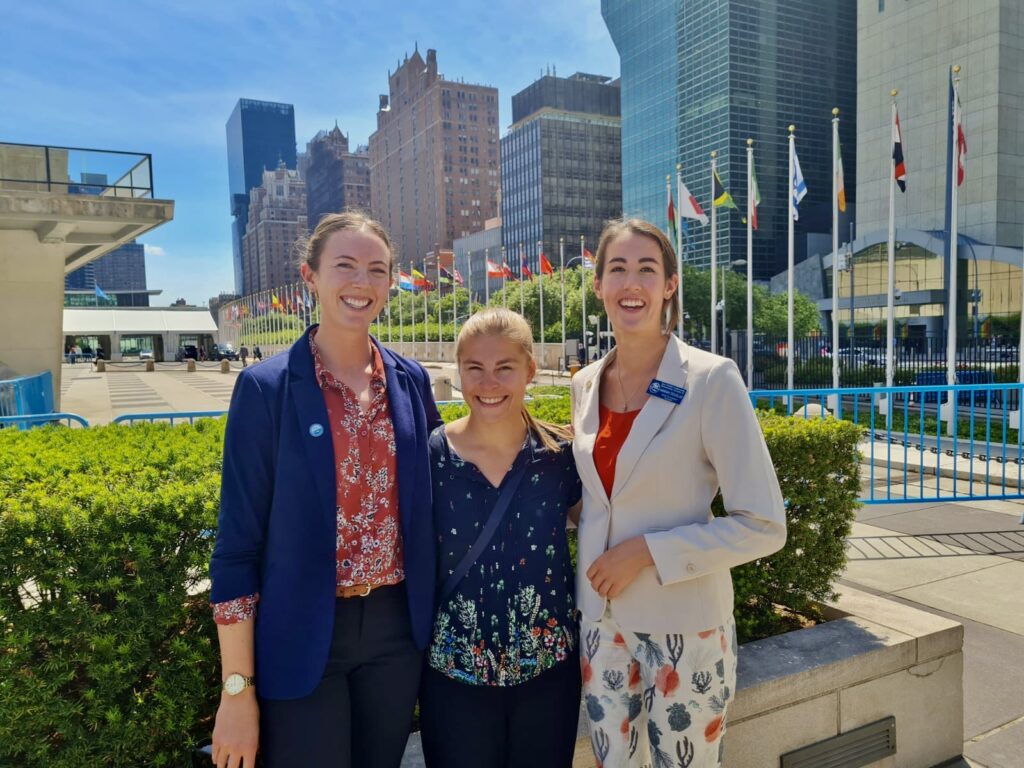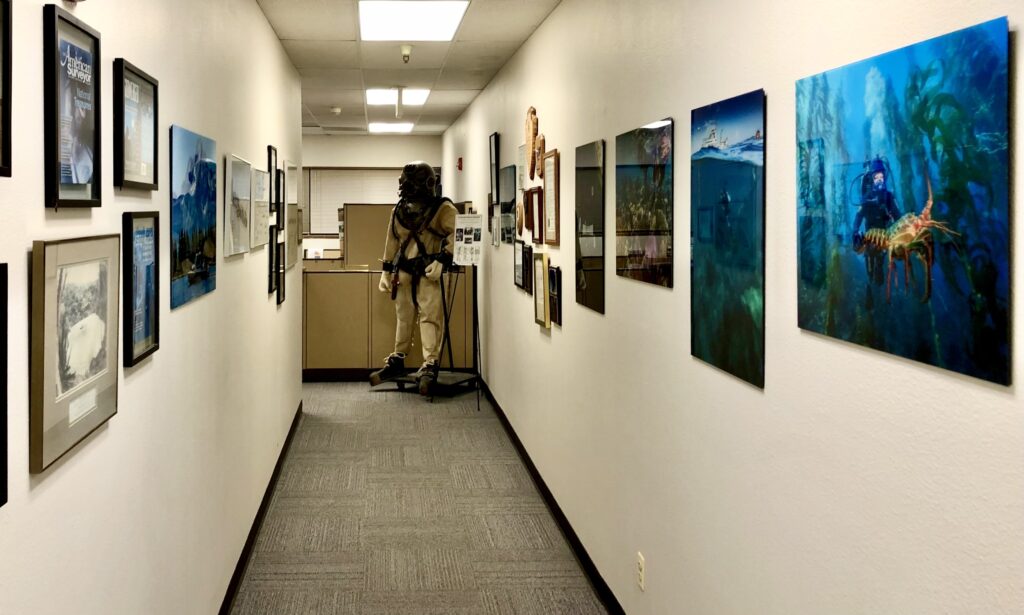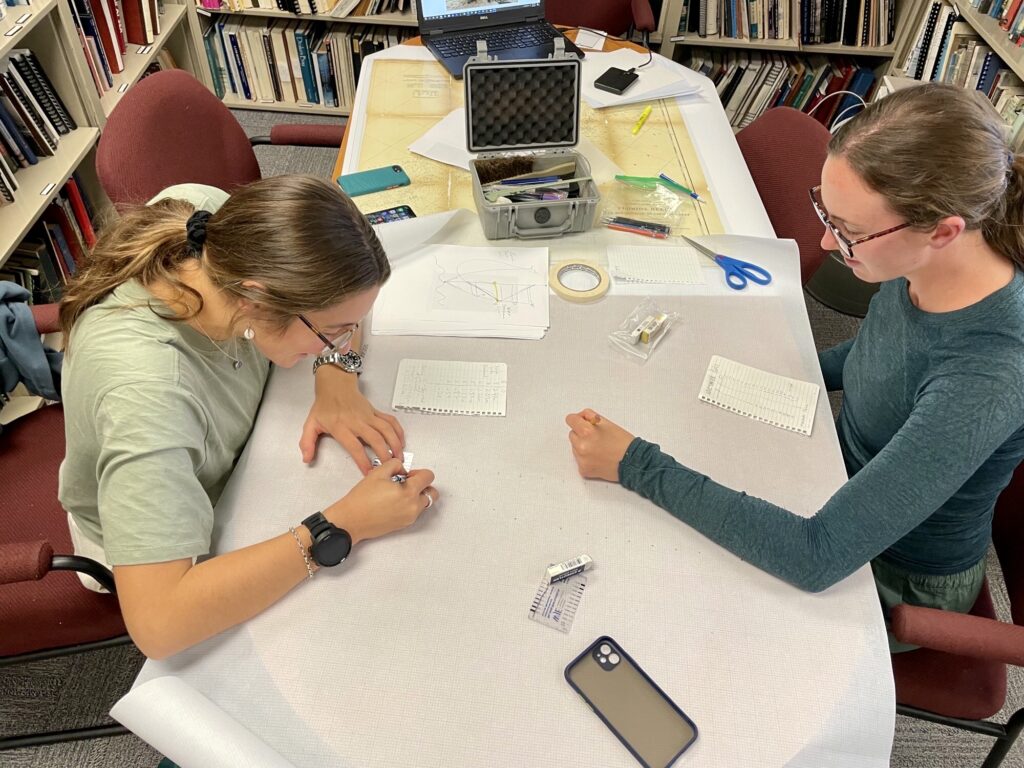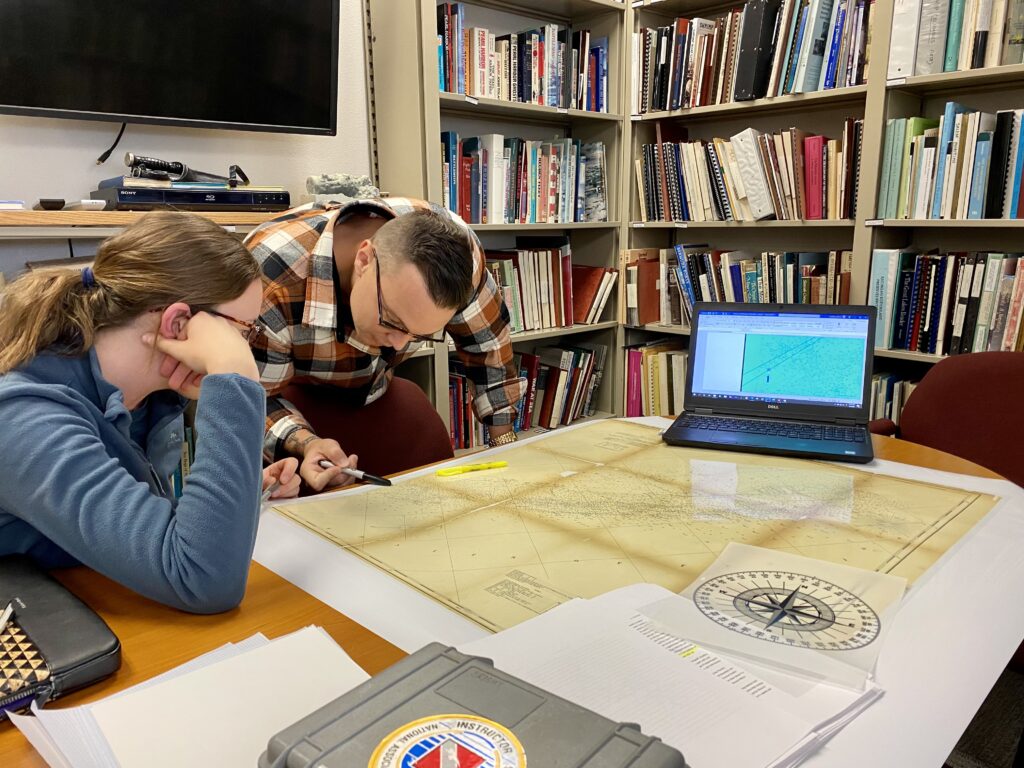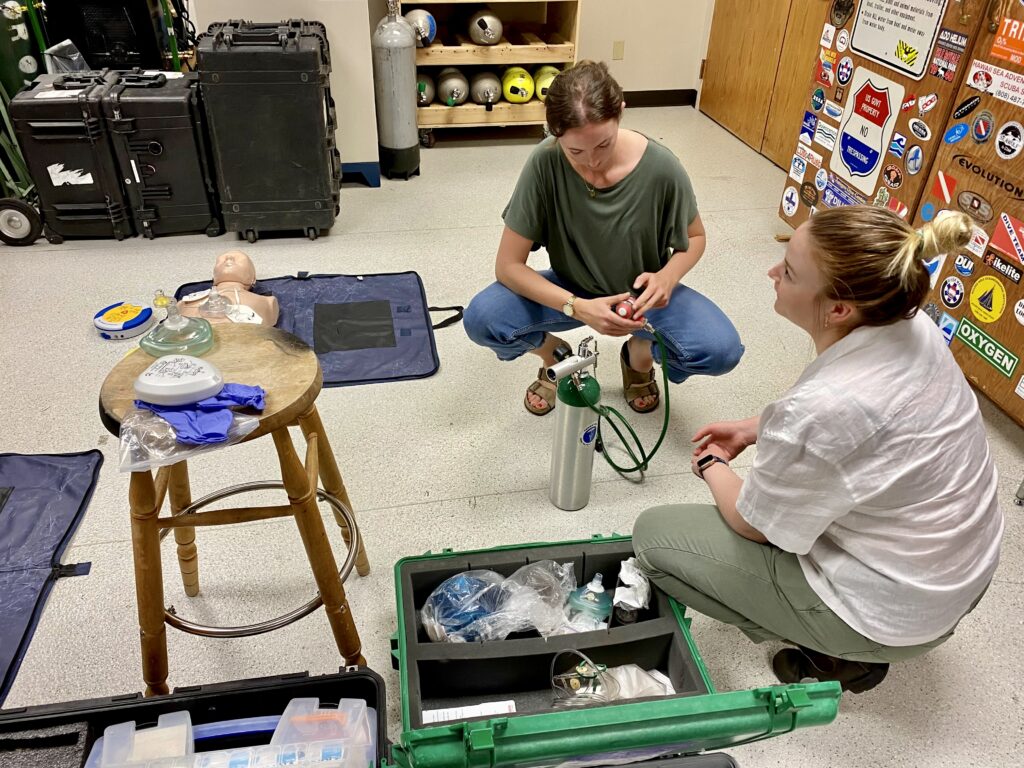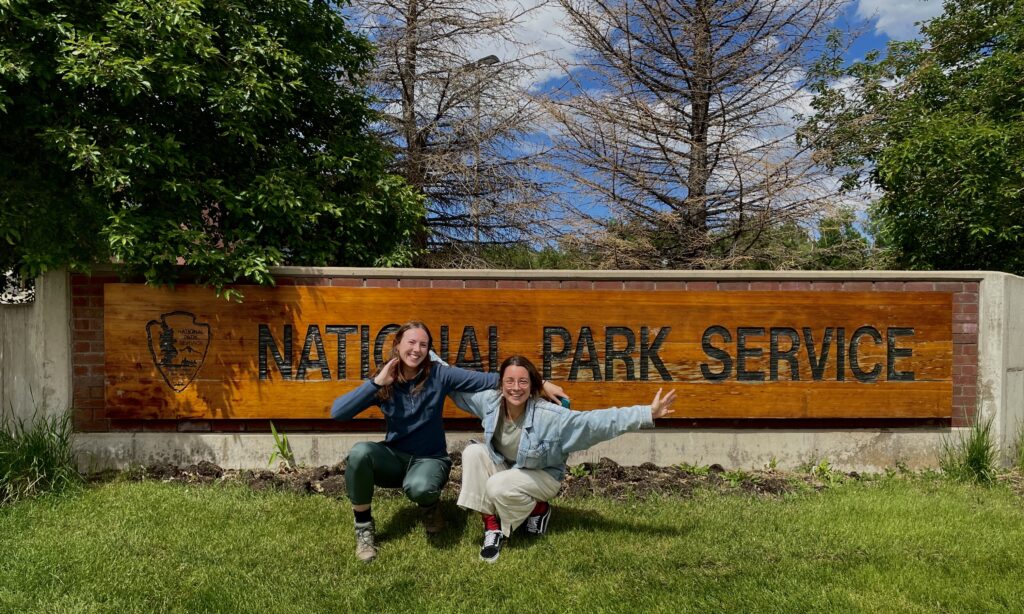A short, slow drive down a single-lane road takes us into the Settlement as Park Dive Officer Kelly Moore, and Aquatic Biological Science Technician Glauco Puig-Santana pick me up at the Kalaupapa airport, on the northern shore of Molokai, Hawaii. They take the opportunity to provide a brief introduction to my home for the next two weeks. Curiously, Kelly begins by detailing and demonstrating good driving practices on the peninsula. The recommendation? 1) Drive no more than 10-15 mph; 2) at each intersection, slow down, look left-right-left, and right again; 3) don’t assume vehicles will stop at stop signs; and 4) vehicles have the right-of-way over pedestrians. Last but not least? If you encounter a vehicle coming towards you, drop your speed, turn towards the shoulder of grass, pulling all four wheels off the road to create ample space for passing – and the other car will likely do the same. What initially strikes me as a highly unusual style of driving begins to make sense as I come to learn about the history of this captivating landscape and isolated community.
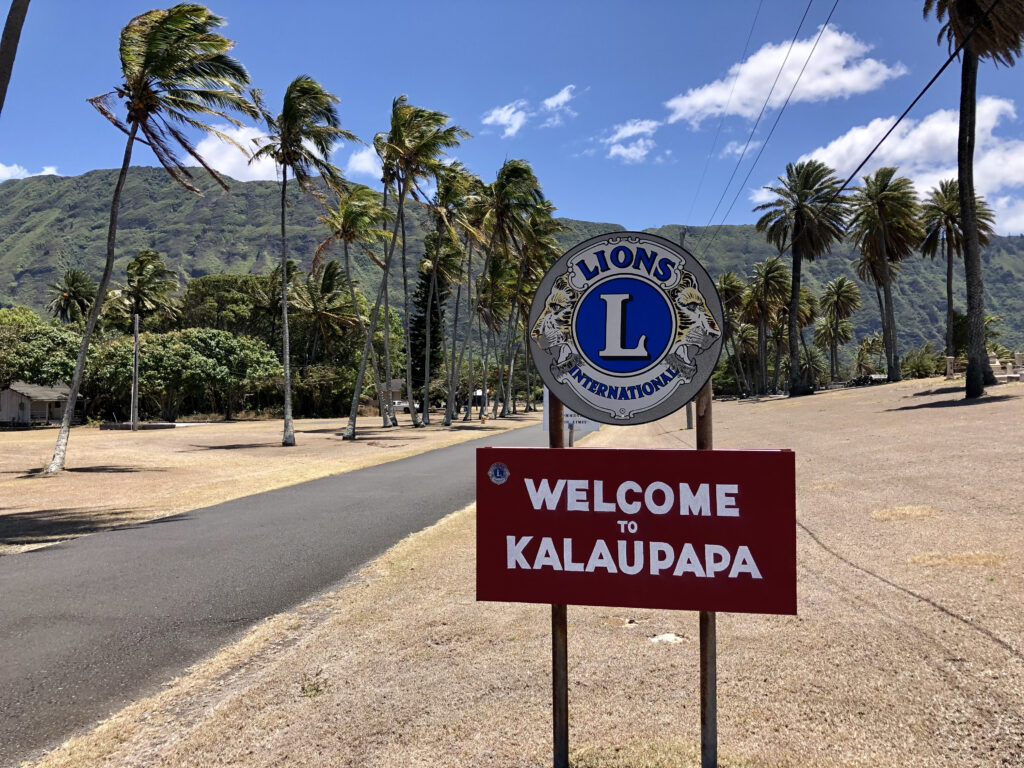
A single road leads into the Settlement from the Kalaupapa airport. The park is only accessible by small plane or by descending the switchbacks of a steep sea cliff on foot
A prison fortified by nature. Medical segregation. Hardship in separation.
The 2,000 ft. pali (sea cliffs) and deep, rough sea surrounding this charming leaf-shaped peninsula frame a dark history. From 1866–1969, this very location served as an isolation settlement for over 8,500 individuals forcefully removed from their homes – individuals who were diagnosed with a widely feared and misunderstood illness, known at the time as leprosy (now, Hansen’s disease – named after the scientist who discovered the bacterium that causes this disease). Easily treatable since the 1940s (and the advent of antibiotics), the settlement is now a refuge for a handful of patients who have chosen to remain here after the mandatory quarantine was lifted over 50 years ago. For many, long-term effects of this disease still impact daily life, such as numbness, paralysis, scarring, and impaired vision. Nowadays, extra precaution is taken at every corner (including the aforementioned driving norms to protect the safety of some patients who still get around on four wheels) with the support of the Hawai’i Department of Health and the National Park Service.
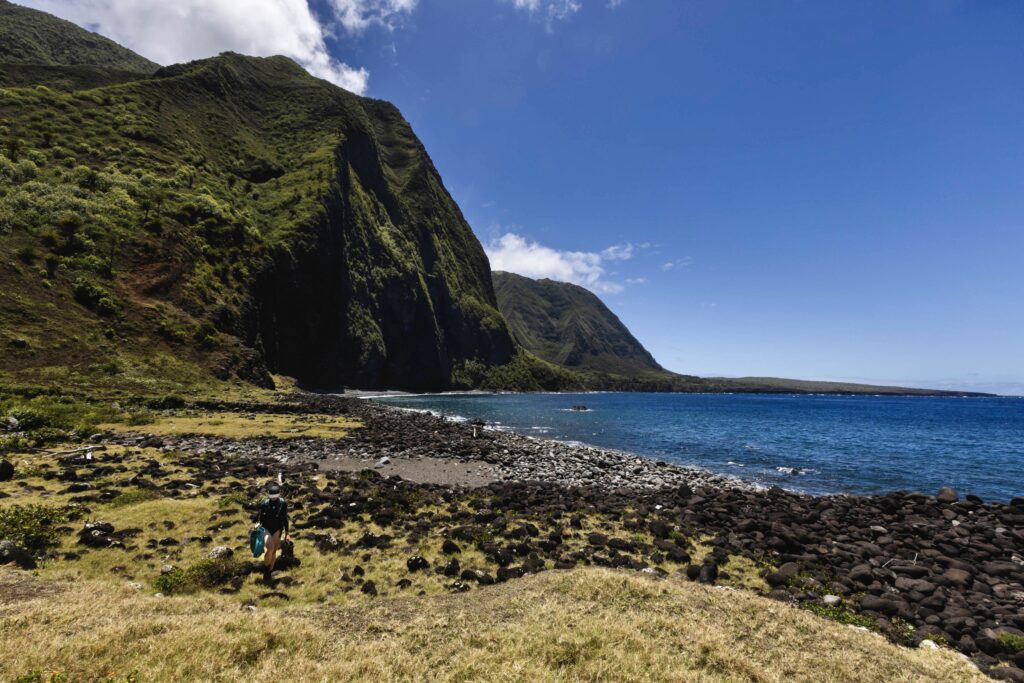
The National Park Service works not only to preserve the natural features of the environment but maintains museum collections, cemeteries, cultural landscapes, and historic buildings around the peninsula. Photo: Shaun Wolfe
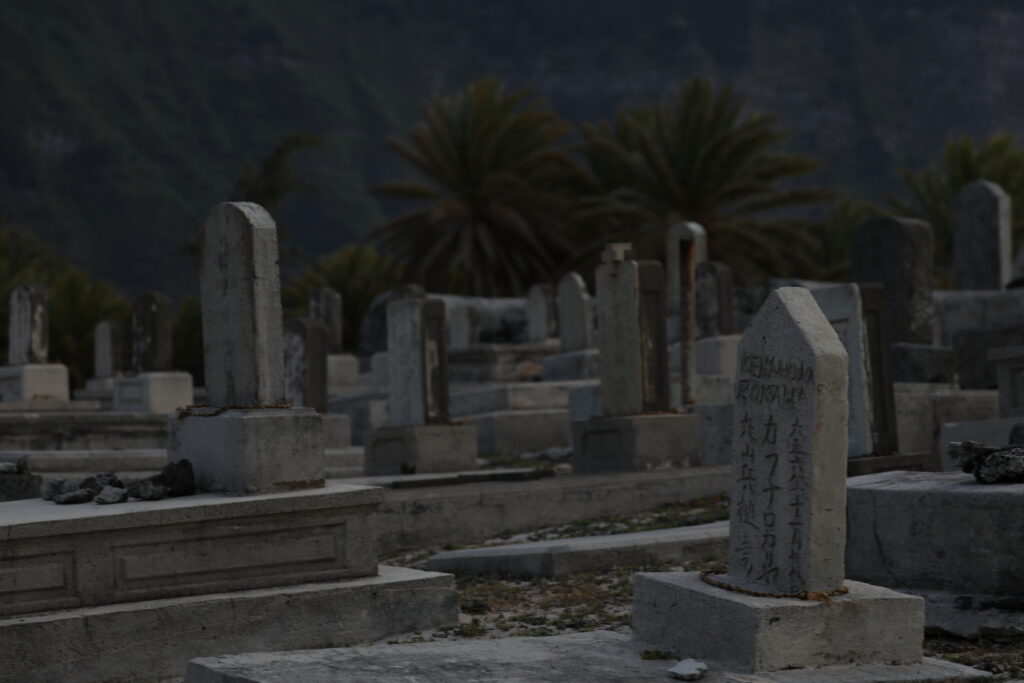
Invisible to the untrained eye, this seemingly untouched, impeccably preserved, and dramatic natural coastline is physically scarred by its history. Archeological remains of native Hawaiian ahupua’a (land divides) run through the cliffs and valleys, designating historical land use areas, and contain well-preserved examples of irrigation systems, ancient birthing stones, heiaus (temples), and cultivated taro fields. Now, these remains are reminders of the lost connection with the ‘aina (land) that occurred here once the native Hawaiian population was decimated by a series of epidemics in the mid-to-late- 1800s and displaced following the sale of land to the Board of Health in preparation for incoming patients. During times of quarantine, physical barriers were erected throughout the Settlement to segregate patients from caretakers, visitors, and servicepersons (e.g., patient and non-patient washrooms, chest-high walls dividing two sides of a long, narrow visitors center, and short gates placed on waiting benches outside care homes). Although these barriers have since lost their function, those that remain serve as a daily reminder of the alienation and physical distance maintained for over a century within the buildings we are now working and living in.
Underwater, our goal for the next two weeks is to complete the annual Pacific Island Inventory & Monitoring Network subtidal surveys with Kelly, Glauco, and visiting NPS Marine Ecologist Sheila McKenna. Together, we will collect water quality samples, take benthic photos, and survey fish along fixed, permanent transects. My first time in the tropical Pacific can only be described as “fish Christmas” – as I take in the tens of new-to-me species (from endemic triggerfish humuhumunukunukuāpua’a – say that five times fast! to fancy butterflyfish, Hawaiian hogfish, and psychedelic wrasse).
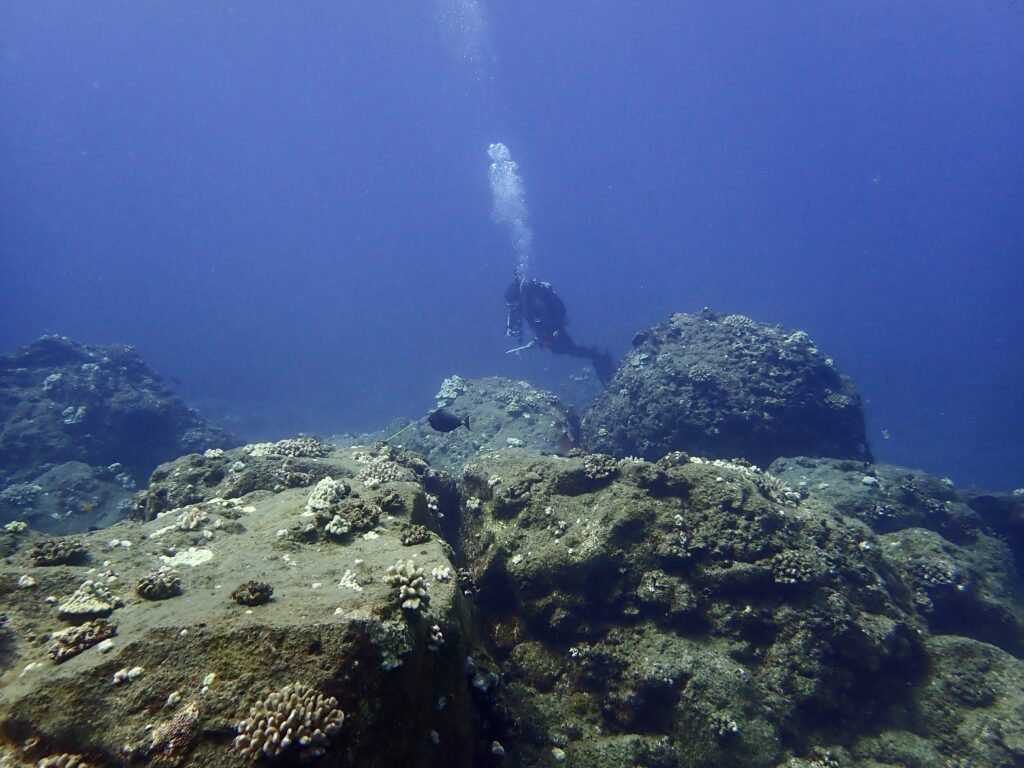
NPS Marine Ecologist Sheila McKenna conducts fish surveys on a permanent transect, as part of the annual Pacific Island Inventory & Monitoring Network subtidal surveys
The view above and below the surface are equally as mesmerizing. Bus-sized boulders litter the seafloor for miles – dropped from the island over 1.5 million years ago when a third of Molokai collapsed into the ocean. On the east side of the peninsula, we are greeted by lush valleys, deep Pacific blues, spinner dolphins, sea turtles, and long-tailed tropical birds. Being my first time in Hawaii, it seems like someone has turned the saturation up on life. As the weeks progress, just when I think the peninsula can’t get any more beautiful – it always does.
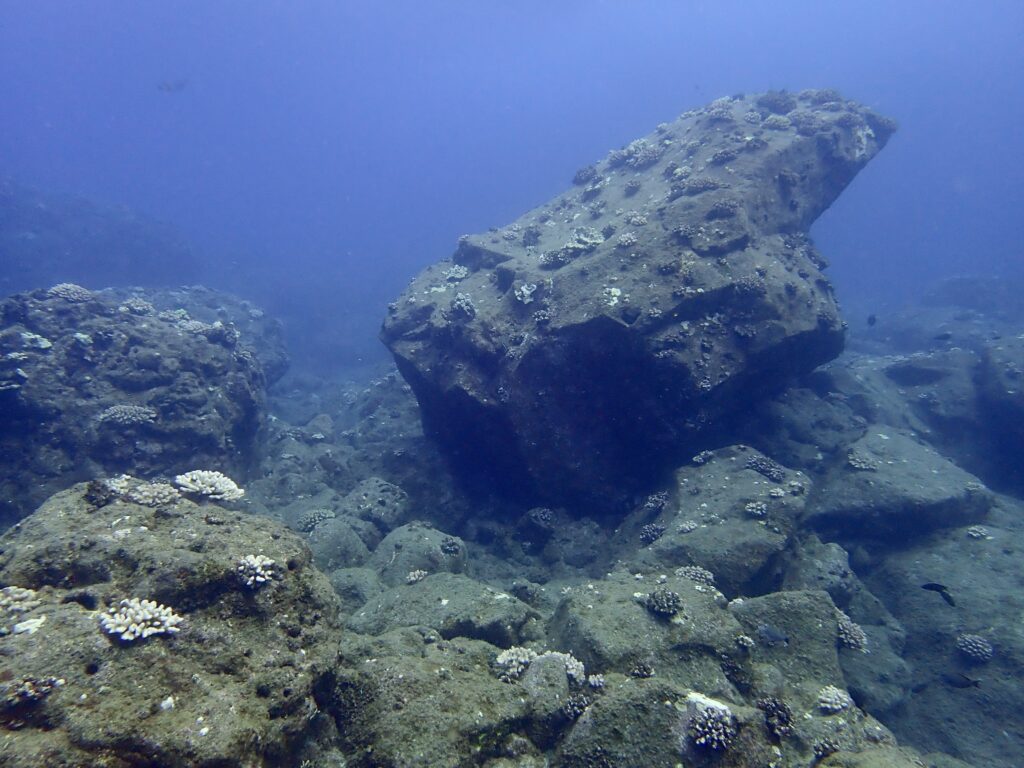
A glimpse into our view during dive surveys
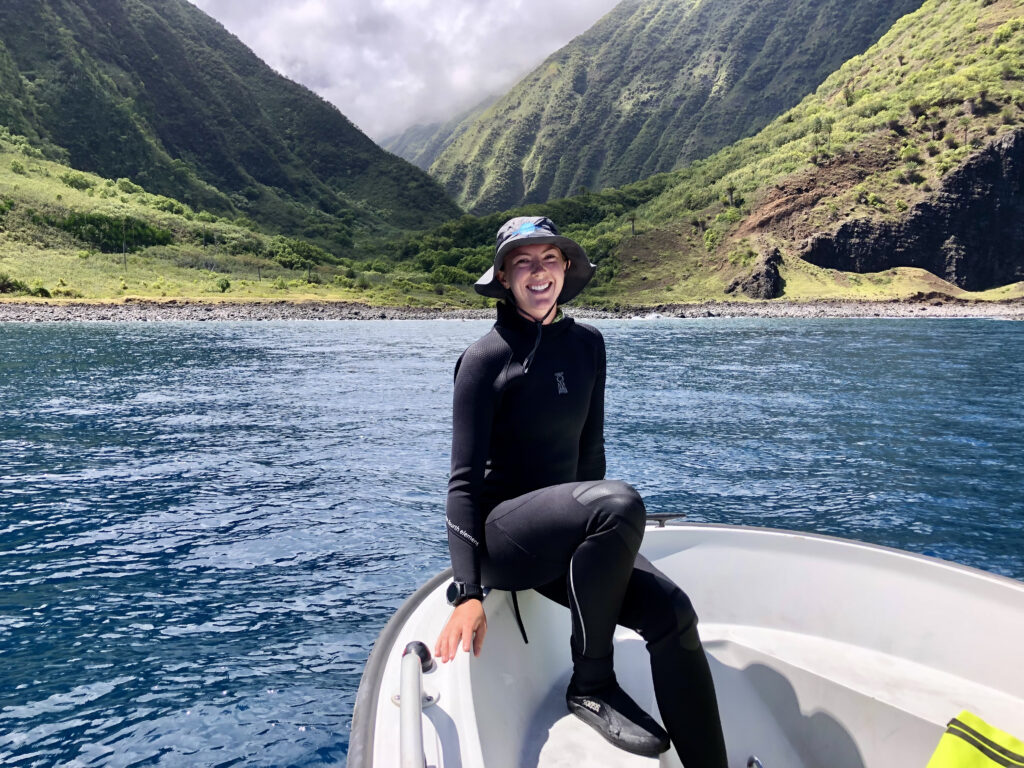
Taking shelter from the waves between dives, in Waikolu valley
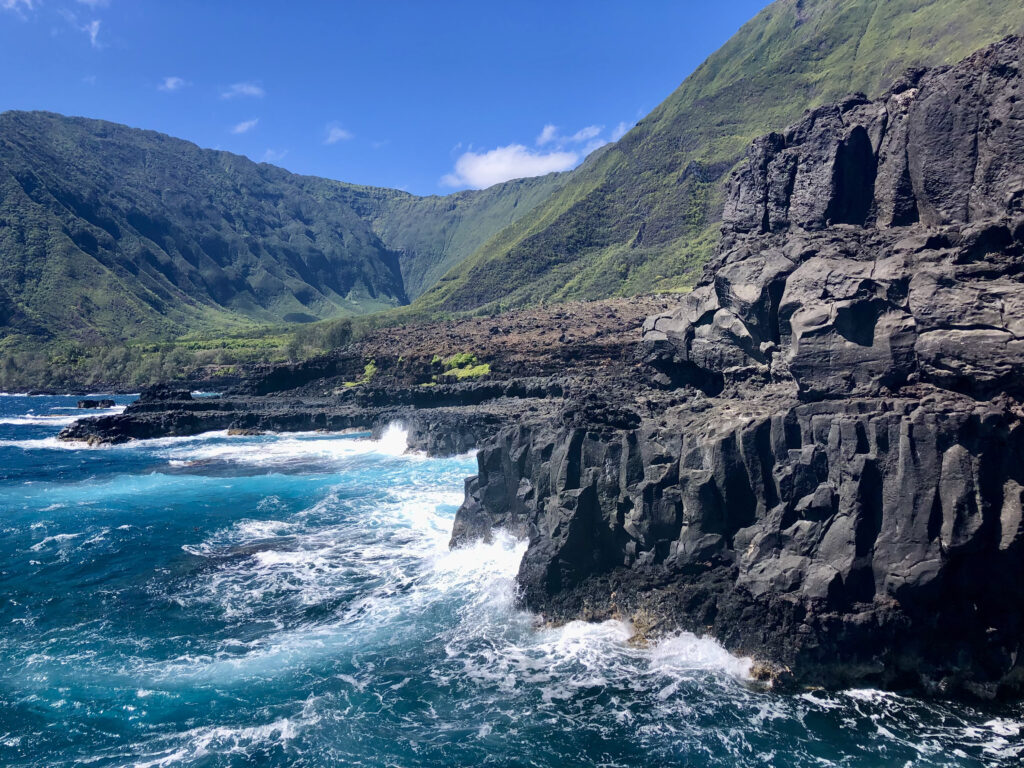
Only in the best weather conditions can we reach the survey sites on the east side of the peninsula, pictured here
Persistent trade winds keep us cool and refreshed out on the water but also interrupt boat-based dive operations on several occasions, shifting our focus to terrestrial or shore-based fieldwork. Lucky for me, this means new training opportunities and time with a special marine resident of the peninsula – the endangered Hawaiian monk seal. In partnership with NOAA, the Kalaupapa Natural Resource Management team opportunistically surveys the resident population along approximately 3 km of coastline (which is home to more than 80% of the total monk seal population within the main Hawaiian Islands). This year, Kalaupapa saw the birth of 12 pups, which are continually monitored for general health and growth, tagged for identification, and vaccinated against morbillivirus. Genetic samples are also taken to inform a parental tree of the local population to understand and better protect this endangered species.
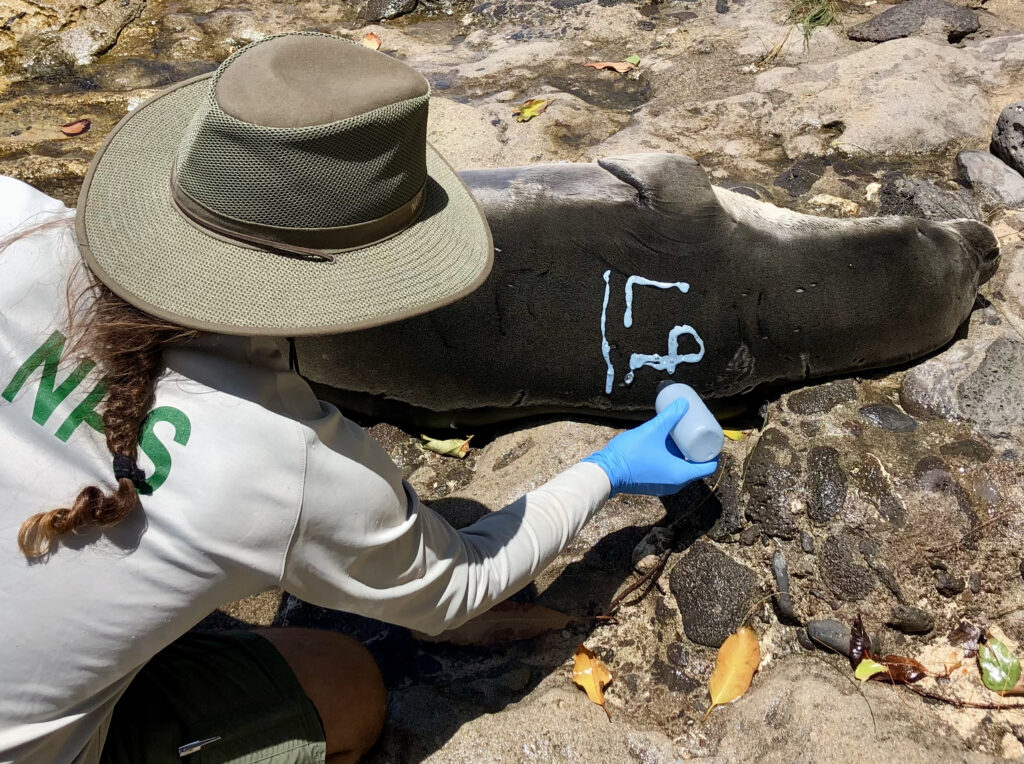
Aquatic Biological Science Technician Glauco Puig-Santana carefully places temporary dye on a sleeping monk seal pup, to assist in identification and monitoring. Monitoring and photos conducted under NOAA NMFS permit #22677.
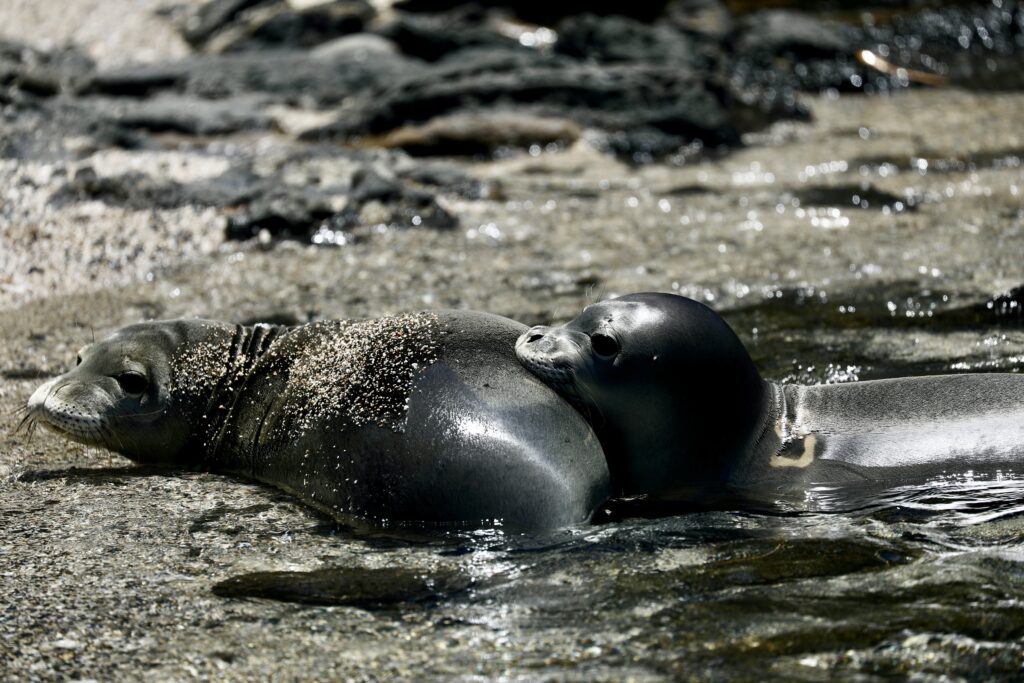
Two monk seal pups play in the shallows, gaining confidence before venturing into deeper waters. Monitoring and photos conducted under NOAA NMFS permit #22677 (and the helpful guidance of Glauco as I try to navigate entry level photography, Mahalo!)
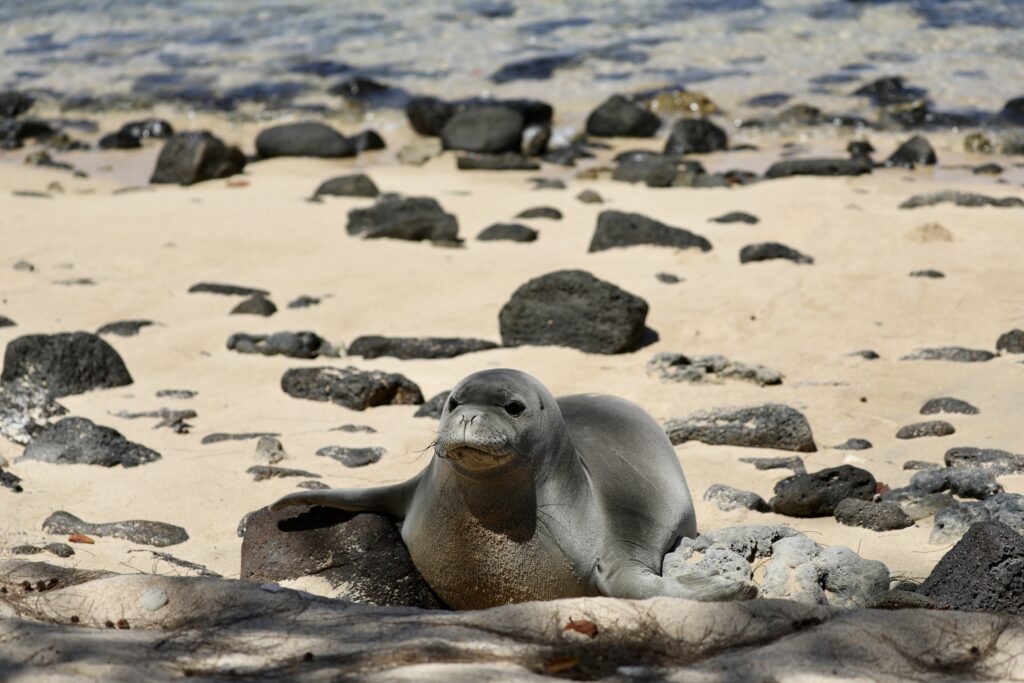
A curious monk seal pup wakes briefly from a mid-day nap. Each seal we encountered on surveys is photographed for reference. Monitoring and photos conducted under NOAA NMFS permit #22677.
Earlier this year, during a routine survey, the NRM team found a young pup with a fishing hook lodged in his throat. After an initial assessment, the pup was taken to Ke Kai Ola Marine Mammal Center for surgery to remove the hook and regain health before his return home. The pup was welcomed back to Kalaupapa in style via US Coast Guard helicopter (with a satellite tag souvenir from his time at the hospital) and surrounded by adoring fans. With the hard work and diligence of the NRM team, US Coast Guard, NOAA, and marine veterinary collaborators, this pup was saved from an uncertain fate – a local success story in protecting this endangered species.
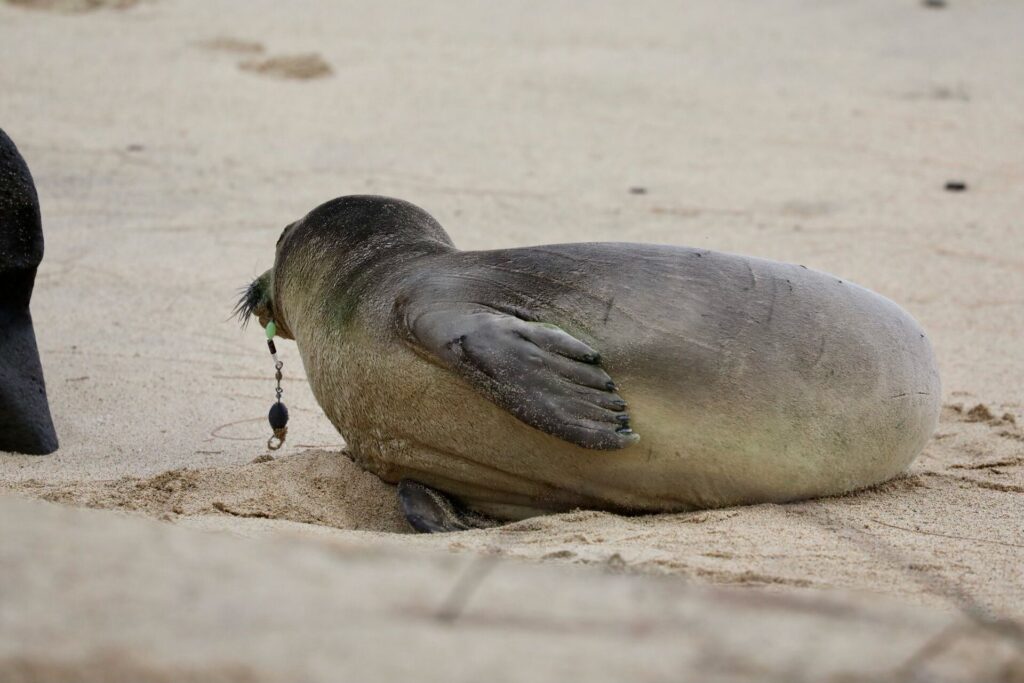
Monk seal pup RP92 found in June with a fishing hook lodged in his throat. The pup received care at the Ke Kai Ola Marine Mammal Center and was returned home healthy and hook-free. Monitoring and photos conducted under NOAA NMFS permit #22677. Photo: National Park Service/Kalaupapa NHP
While conducting fieldwork at the park, I quickly became familiar with an omnipresent force to be reckoned with – the constant pivoting required to keep field operations moving forwards, termed the “Kalaupapa shuffle.” A phrase coined to encompass the challenges of conducting research where weather windows are short, staffing is limited, and access to basic services such as the post office and groceries are restricted to a few hours each day. This delicate dance is necessary in the face of challenges and delays beyond one’s control. We celebrate the days when pivots go smoothly (and we can effectively shift from one project to another within the scope of a day) and learn from and embrace the days when seemingly everything is working against us. In a place where problem-solving requires equal parts creativity and resourcefulness, success teeters on a balance of resilience, flexibility, excellent communication, good spirits, and calm focus – traits all clearly exhibited by the dynamic marine duo of Kelly and Glauco.
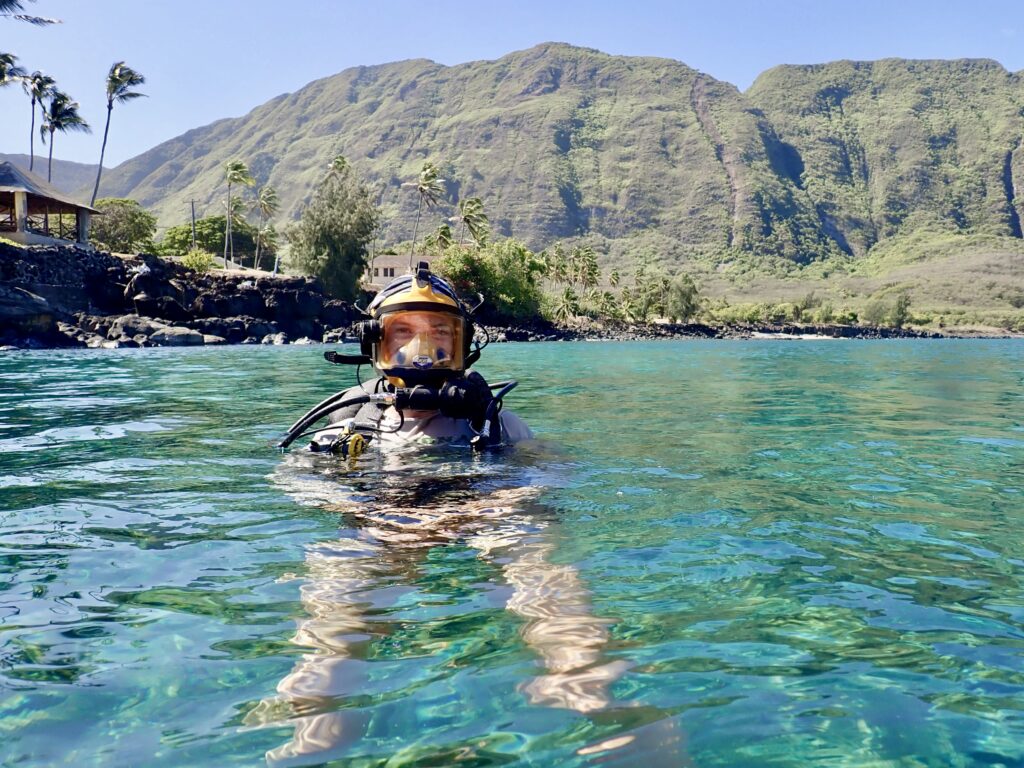
Utilizing the sheltered harbour during rough weather to do full face mask training in preparation for cold water adventures later in the internship…
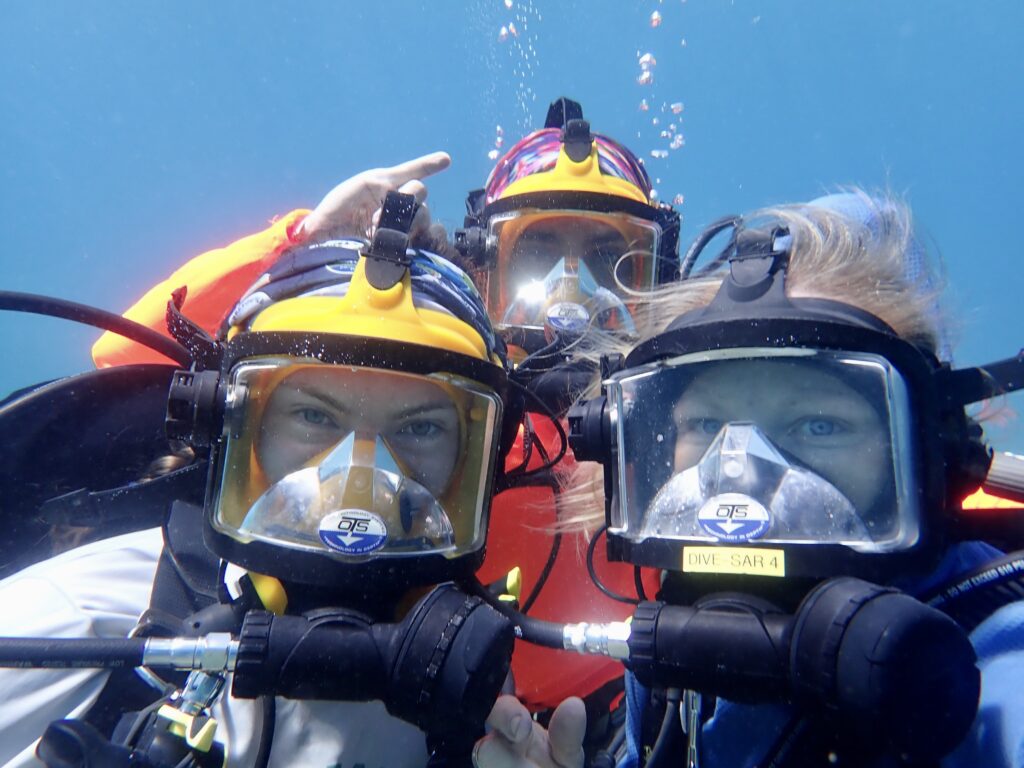
From a day-to-day perspective, Kalaupapa can be described as quite busy, as far as small, unincorporated communities go. Even though the settlement is made up of no more than 70 persons on a given day, there is no shortage of ways to spend evenings and weekends (from volleyball games to music nights, church services, and social gatherings – there is always something going on). In addition to community events, I find comfort in the simple, grounding daily routine I have come to know here. Items such as; checking the ground around a mango tree for freshly fallen fruits, sifting through drying sea salt harvested from nearby tide pools; finding a mortar and pestle to make Hawaiian chili pepper water, and a cliché but soulful sunset walk on the beach occupy my daily to-do list. During moments like these, I don’t dare think about tomorrow. As the days go by, I have a feeling it is going to be very hard to leave.
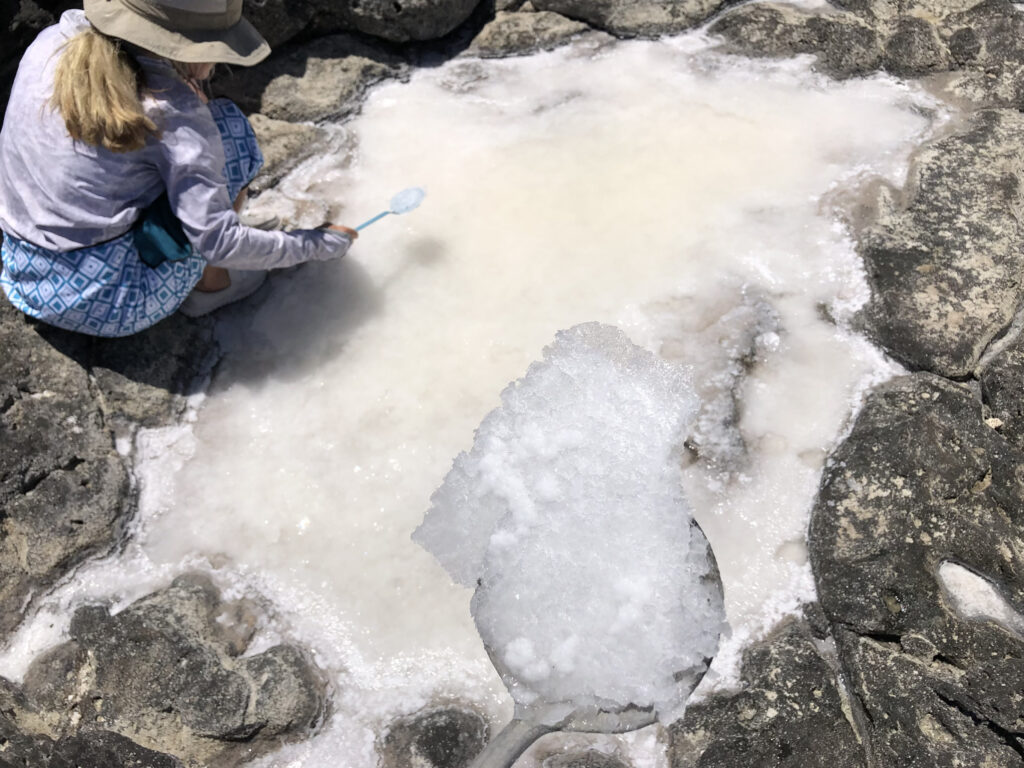
Harvesting sea salt from dried tide pools, a favorite pastime of many and a typical Saturday morning
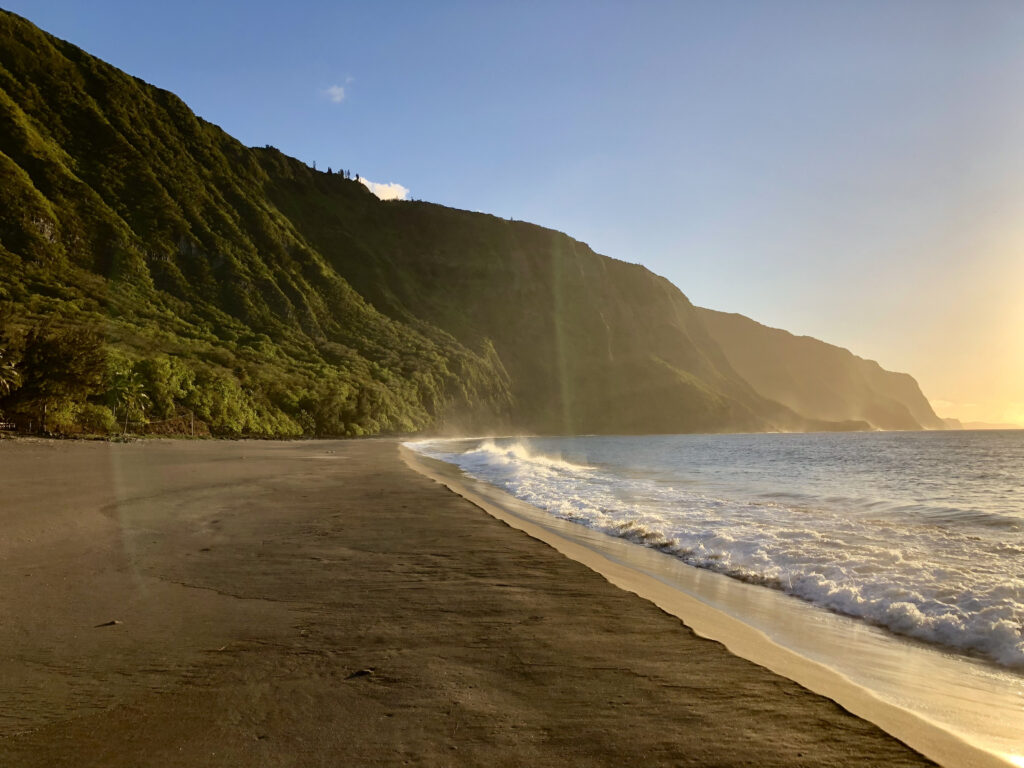
Where you’ll find me after a day in the field – a ten minute walk from the office
Although it is the underwater Natural Resource Management program that brought me here, it is the memories of shared meals, conversations with long-term residents and patients, and adventures in nature with new friends that shine brightest in my memory. Kelly and Glauco, I am so happy to have been a part of your team. Two weeks flew by, but each day felt full. Thank you for showing me the best of Kalaupapa. Shared memories of foraging from the land (collecting papaya, avocado, mango, plantain, banana, chilies, lemons, and breadfruit – meaning often more than 50% of our meals were harvested no more than a few miles from the dinner table), learning to make fresh coconut milk (thank you Losa for sharing your knowledge of traditional Samoan techniques), soaking in freshwater streams of the Waikolu Valley, biking touring around the peninsula, and snorkeling in the shadows of offshore islands Okala and Mokapu are just some of the experiences that capture the spirit of Kalaupapa.
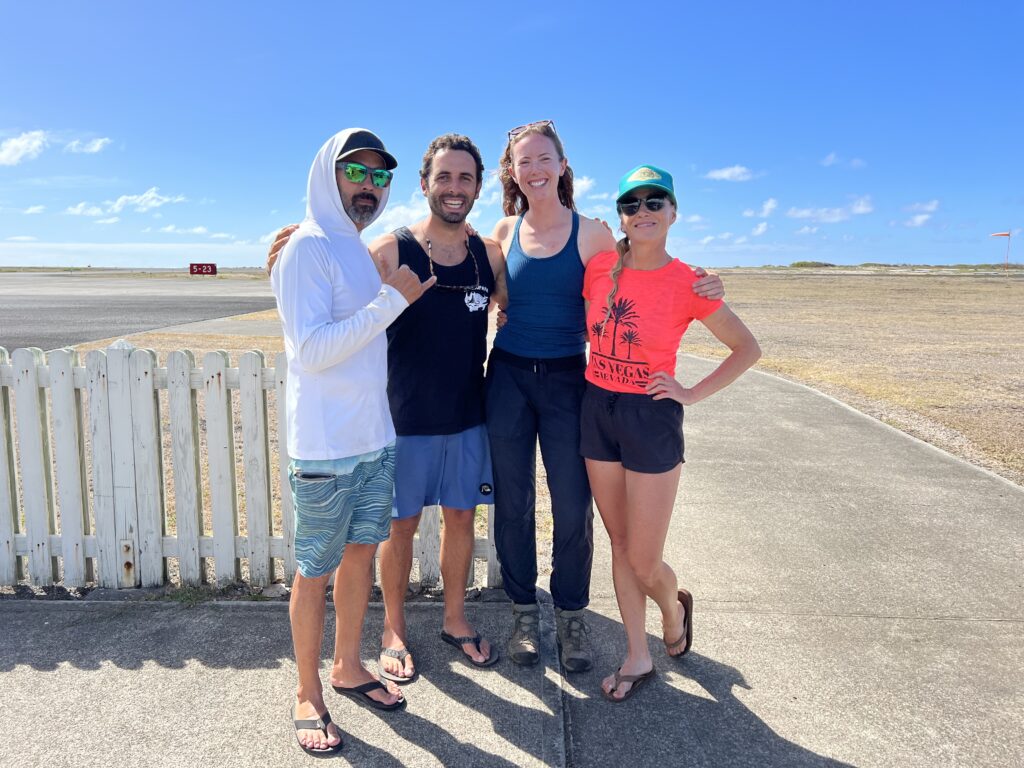
2017 OWUSS NPS intern Shaun Wolfe (intern reunion!!) and Prof. Kevin Weng rounded out the Kalaupapa crew for my last weekend at the park. Thanks for the laughs, the meals, and action-packed send off!
To feel connected to not only the land but the community are aspects of this visit that go above and beyond what I could expect from two weeks at a National Park, leaving a lasting impression. Here, community takes on the true essence of its meaning. Where everyone knows your name, and residents, patients, employees, and visitors alike take on a shared responsibility to maintain a harmonious, comfortable, and well-functioning living space while safeguarding and celebrating longstanding natural and cultural resources.
Today, a hard-to-come-by visitor’s pass to Kalaupapa National Historical Park is not only an access card to some of the most striking natural beauty I’ve laid eyes on, but an invitation into a community– an invitation to learn and pay respects and to live alongside a resilient and uplifted patient community who have known this peninsula during times of suffering and neglect. As time progresses and the patient population decreases, questions are raised as to the legacy of the settlement. Although the future of Kalaupapa is uncertain, we must find a way to continue to share the story of Kalaupapa –and the patients who are still writing the final chapter of its history in the present day.
